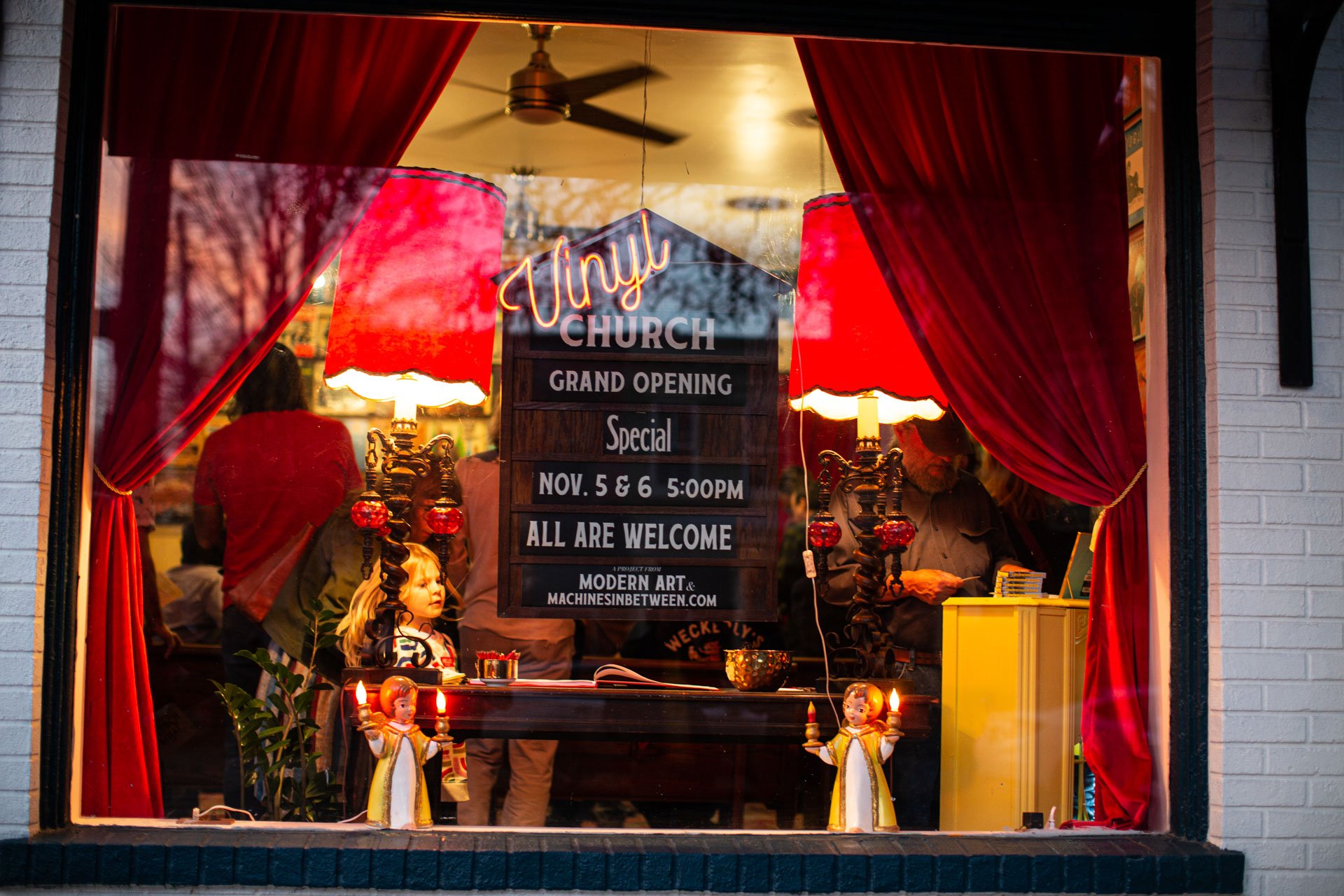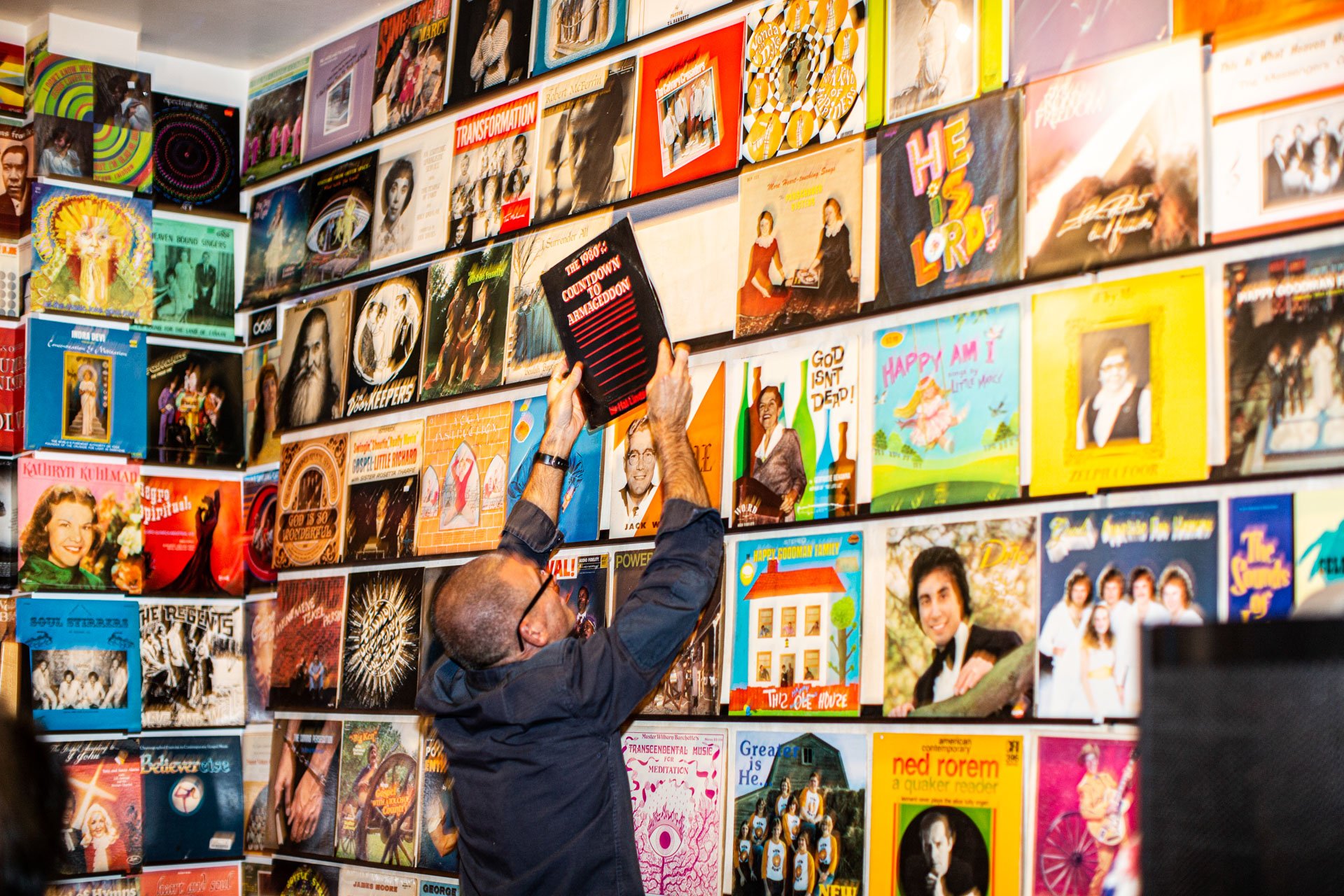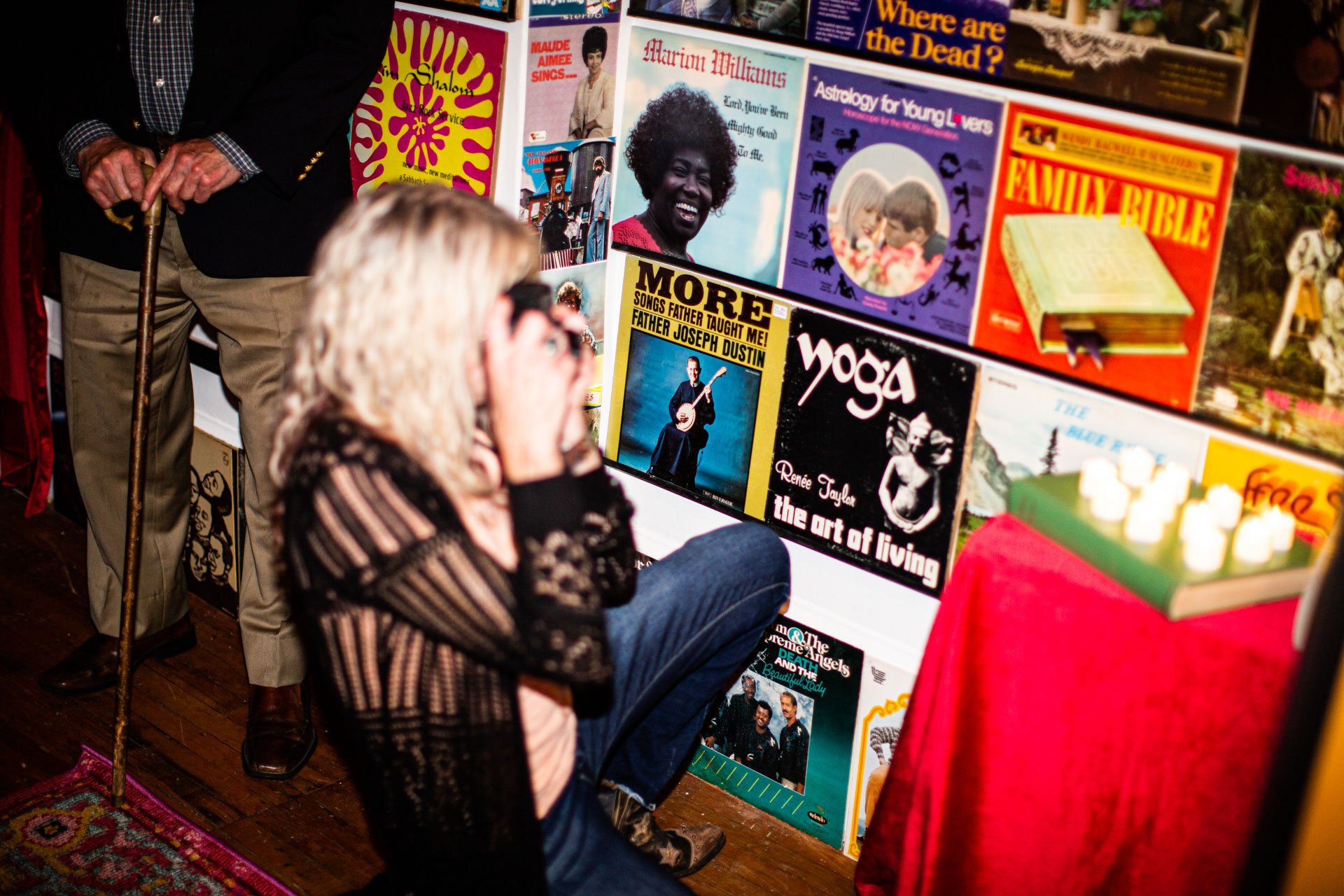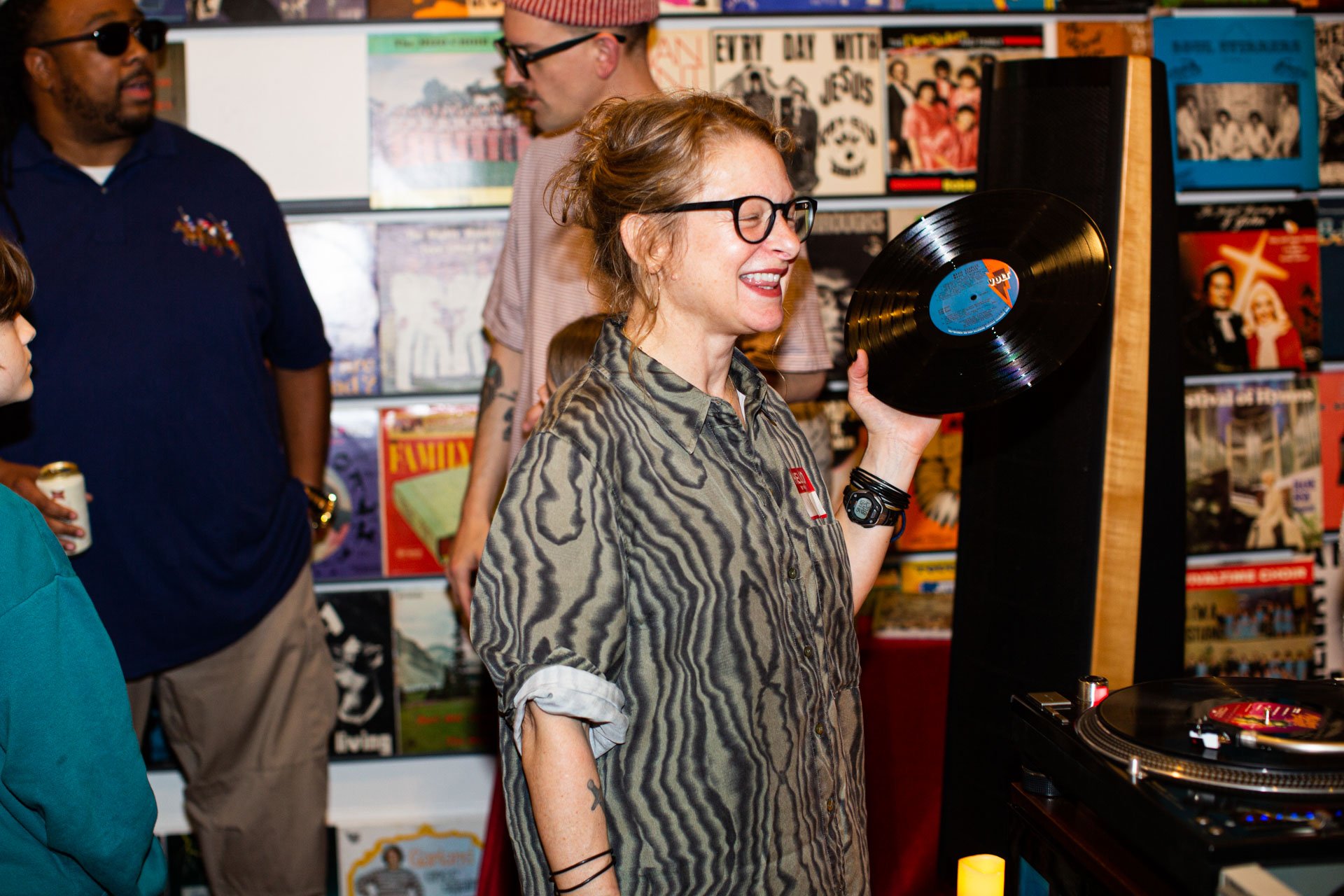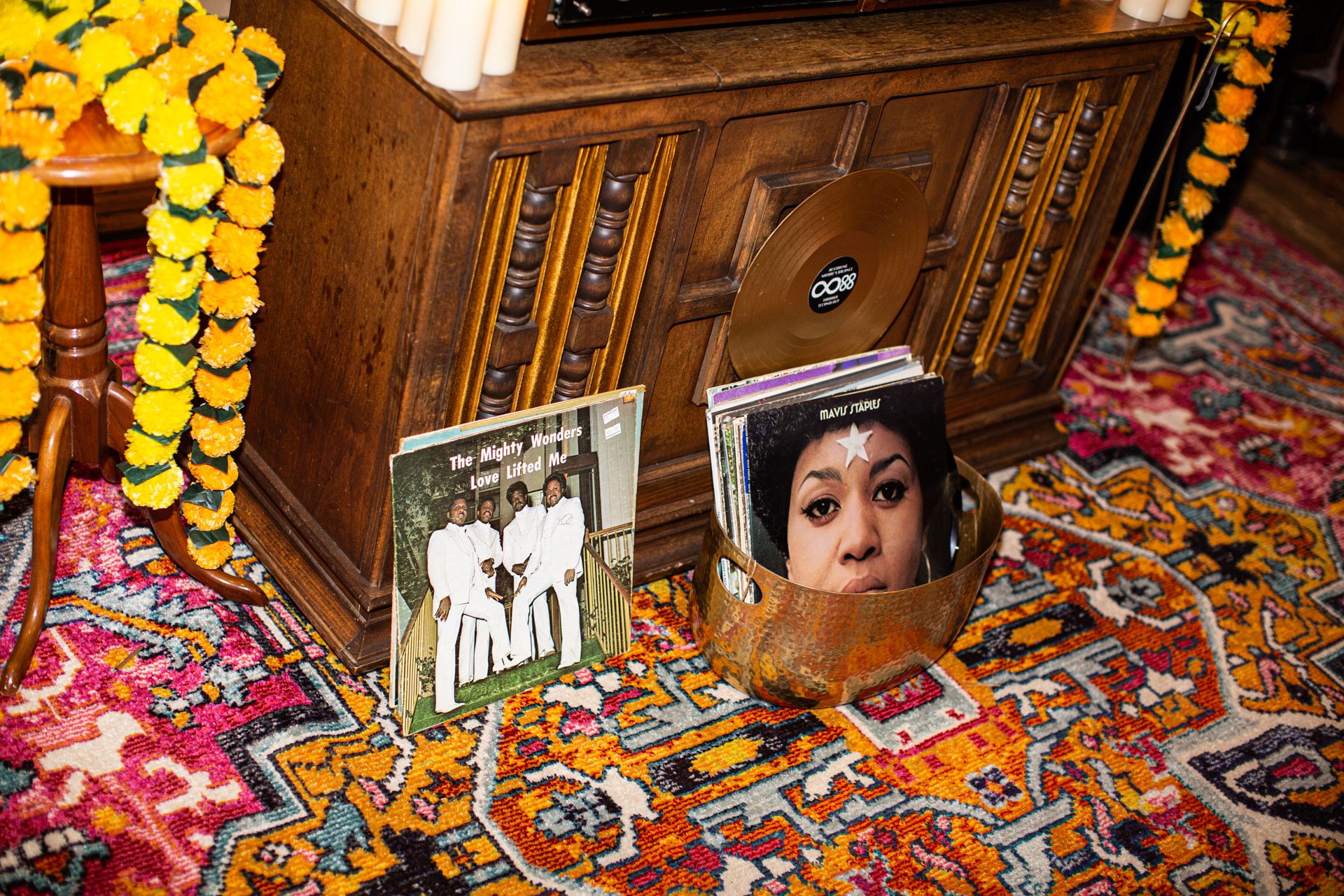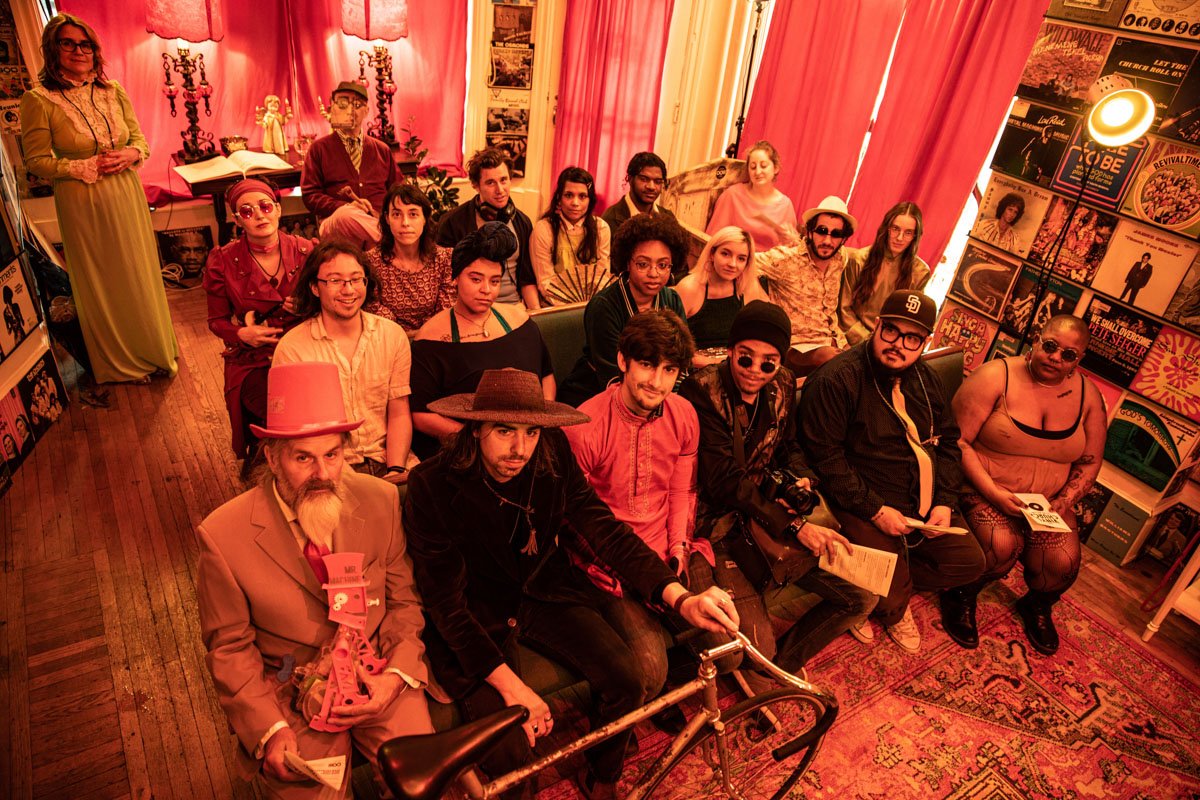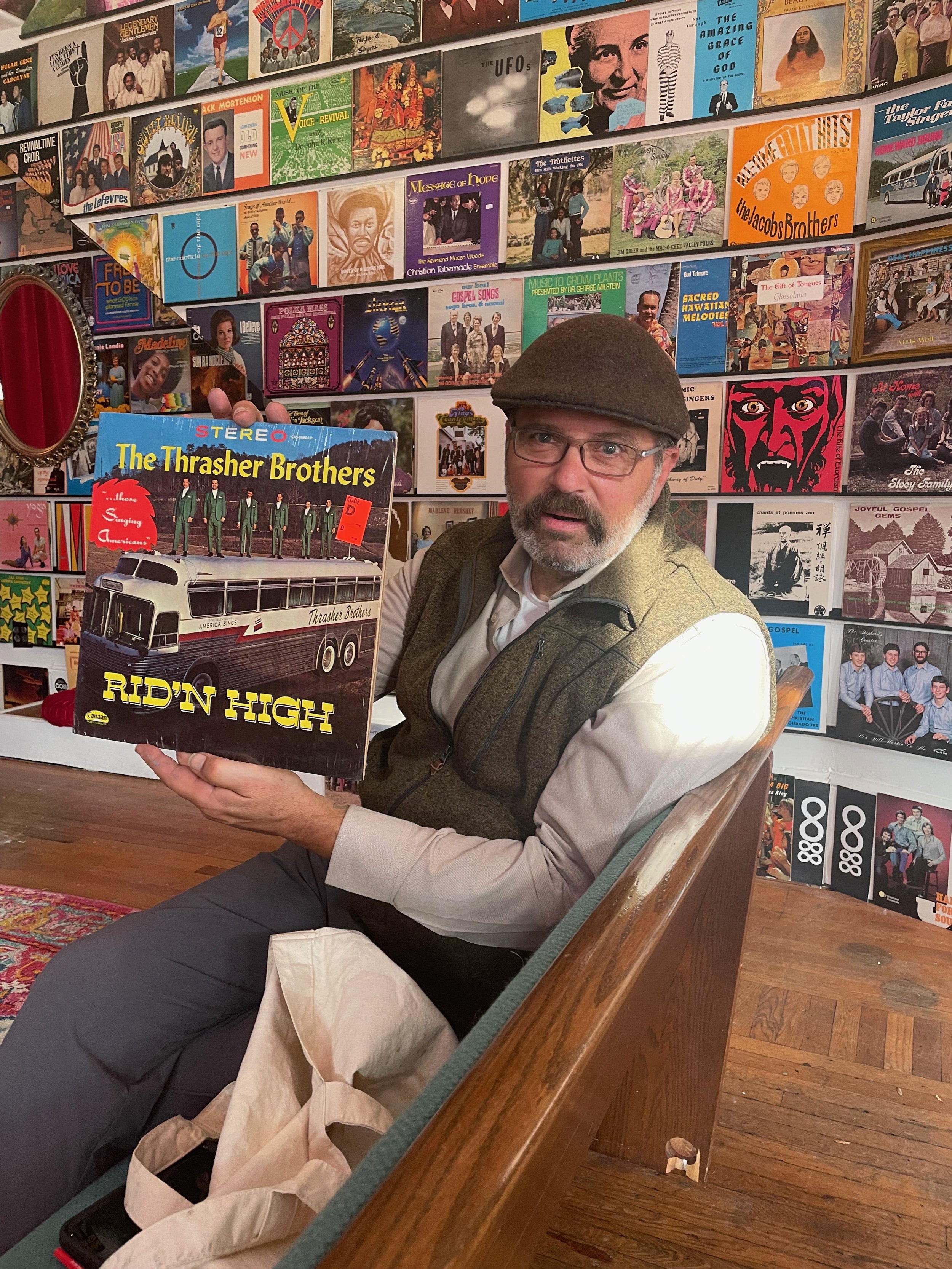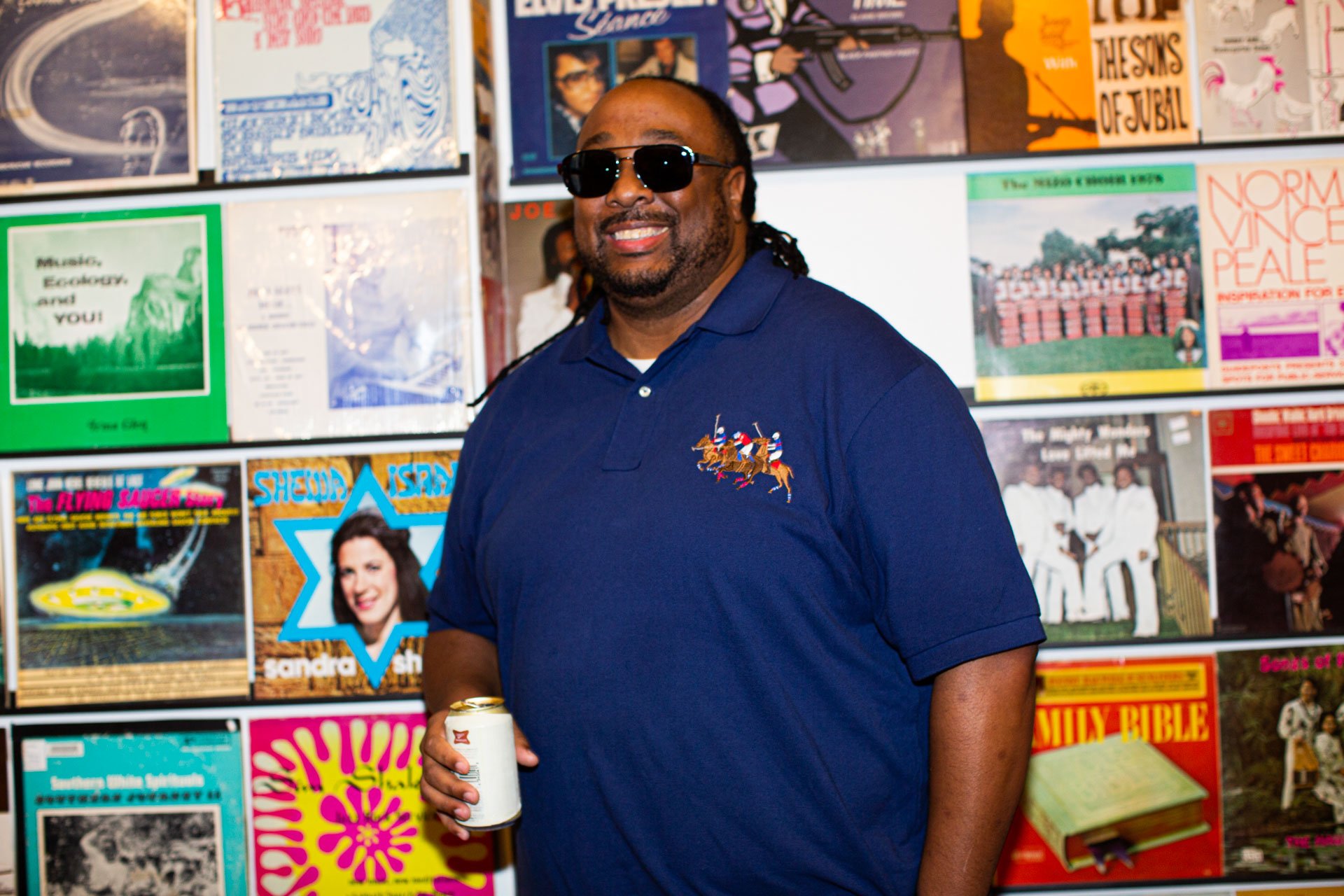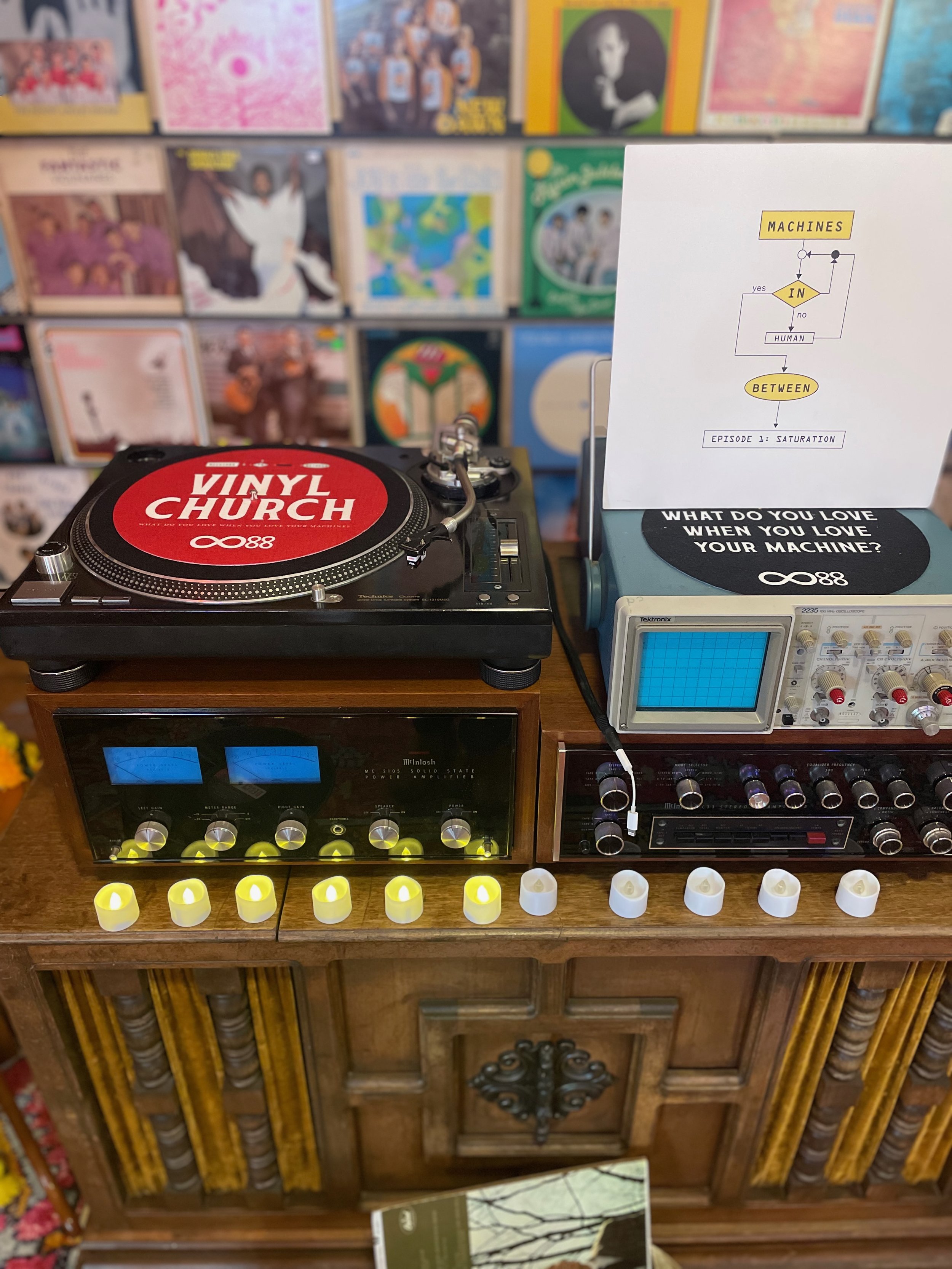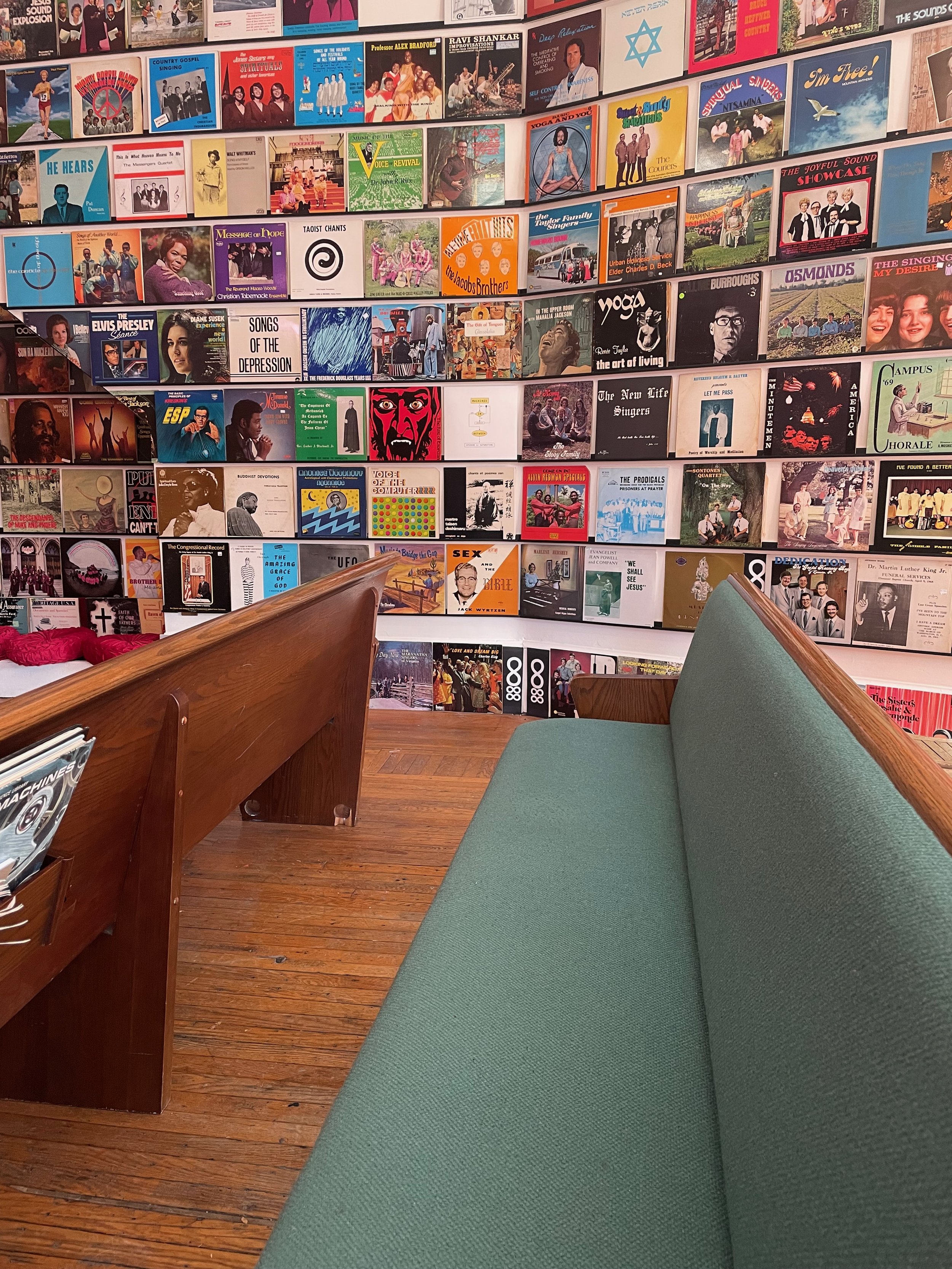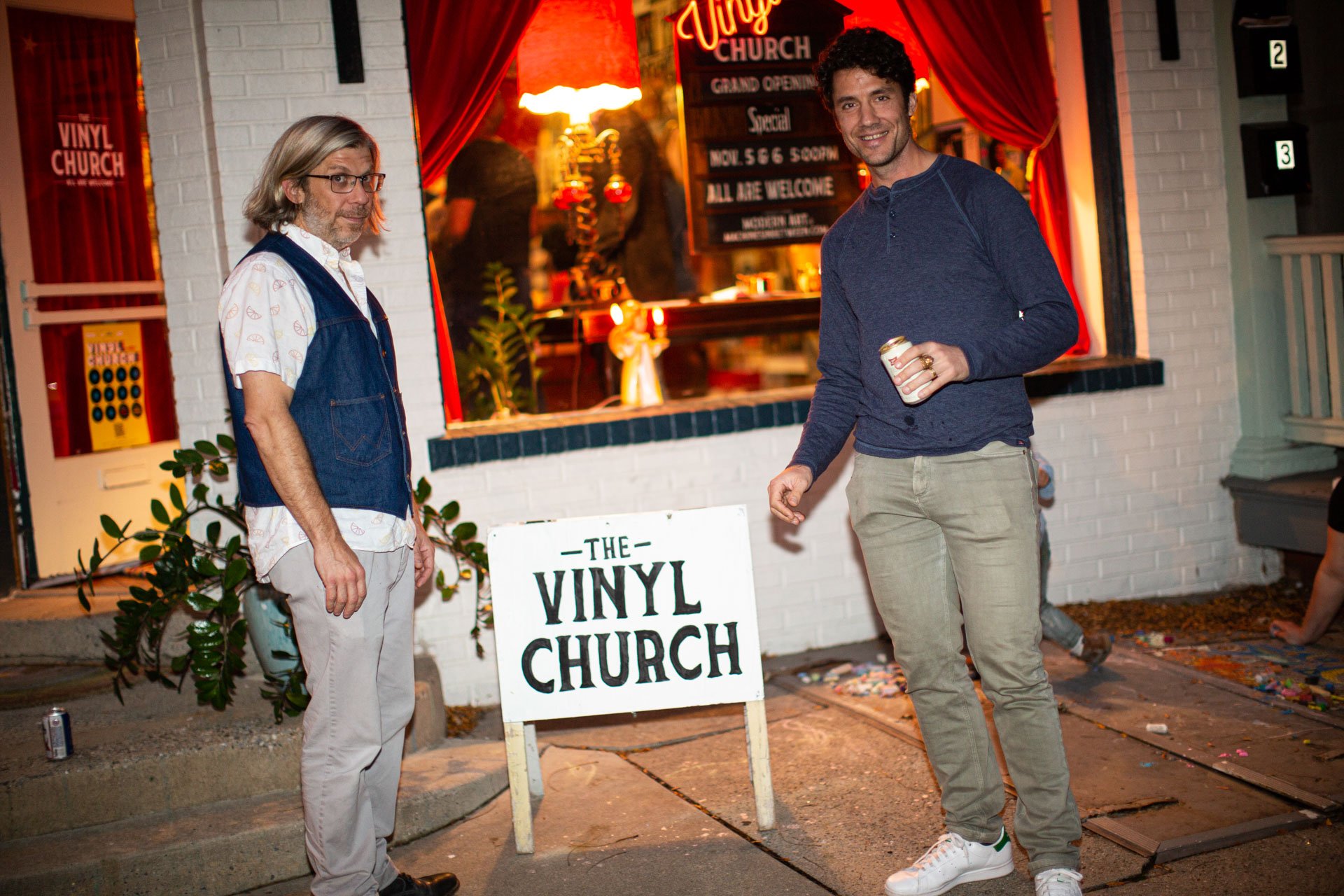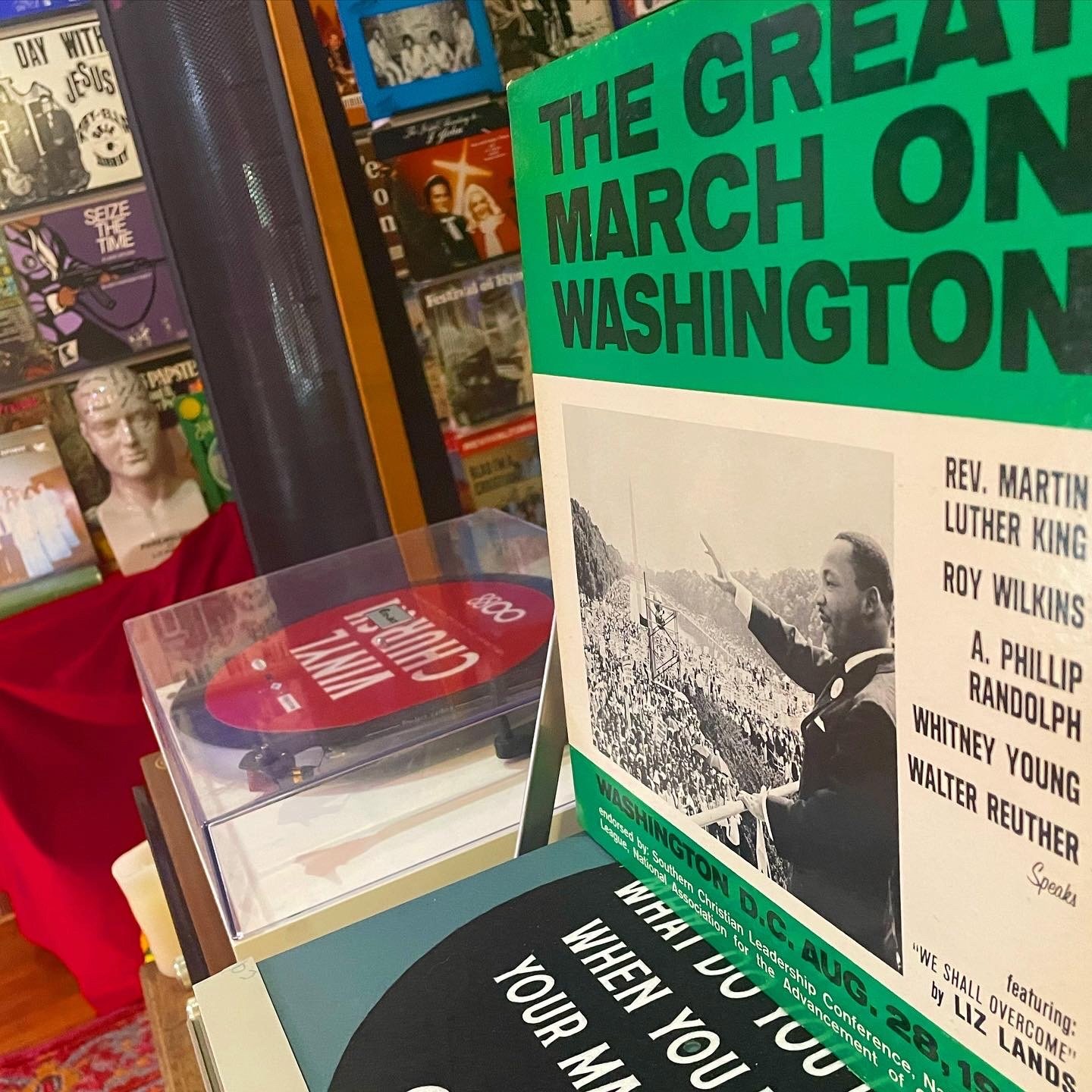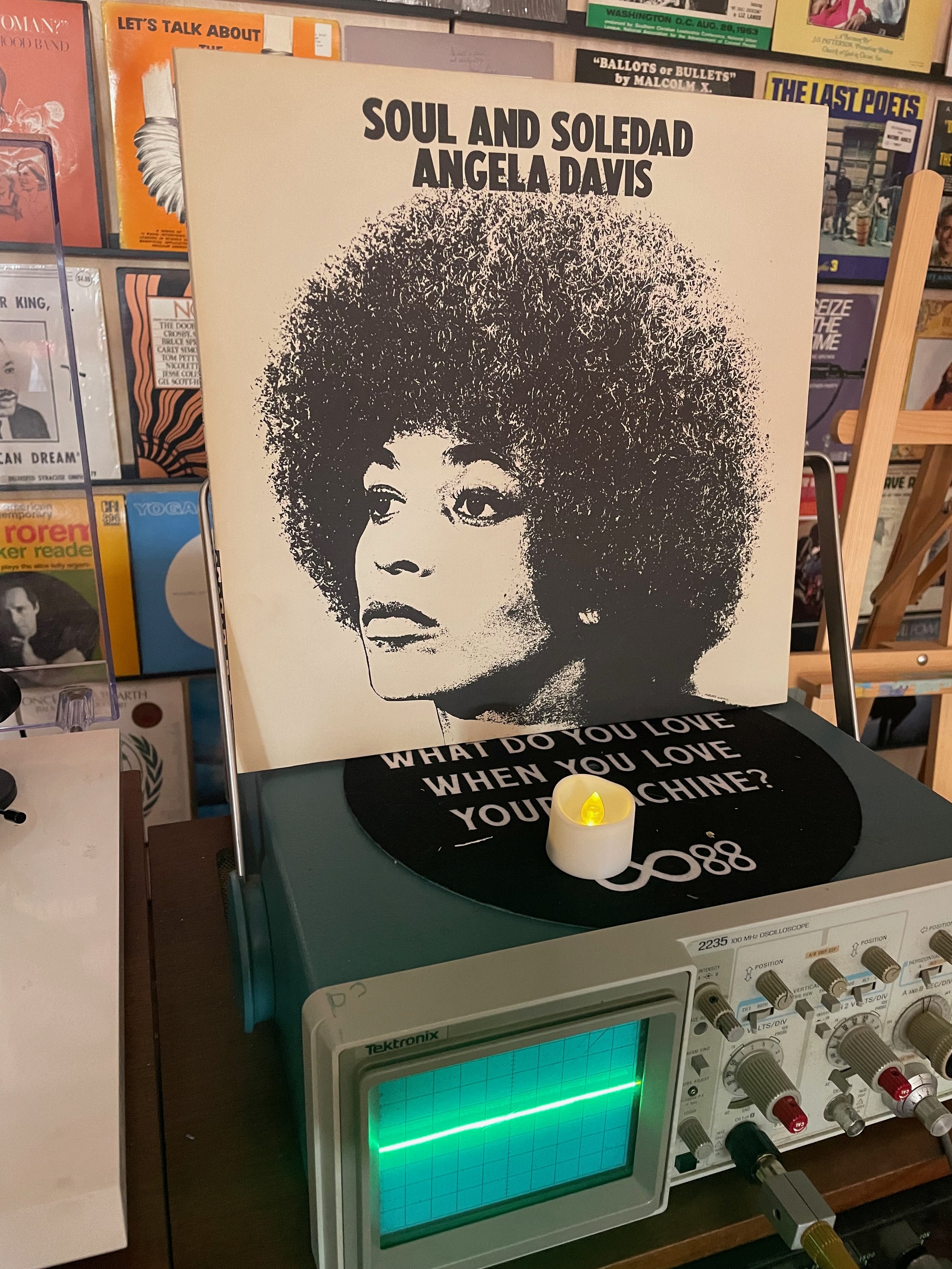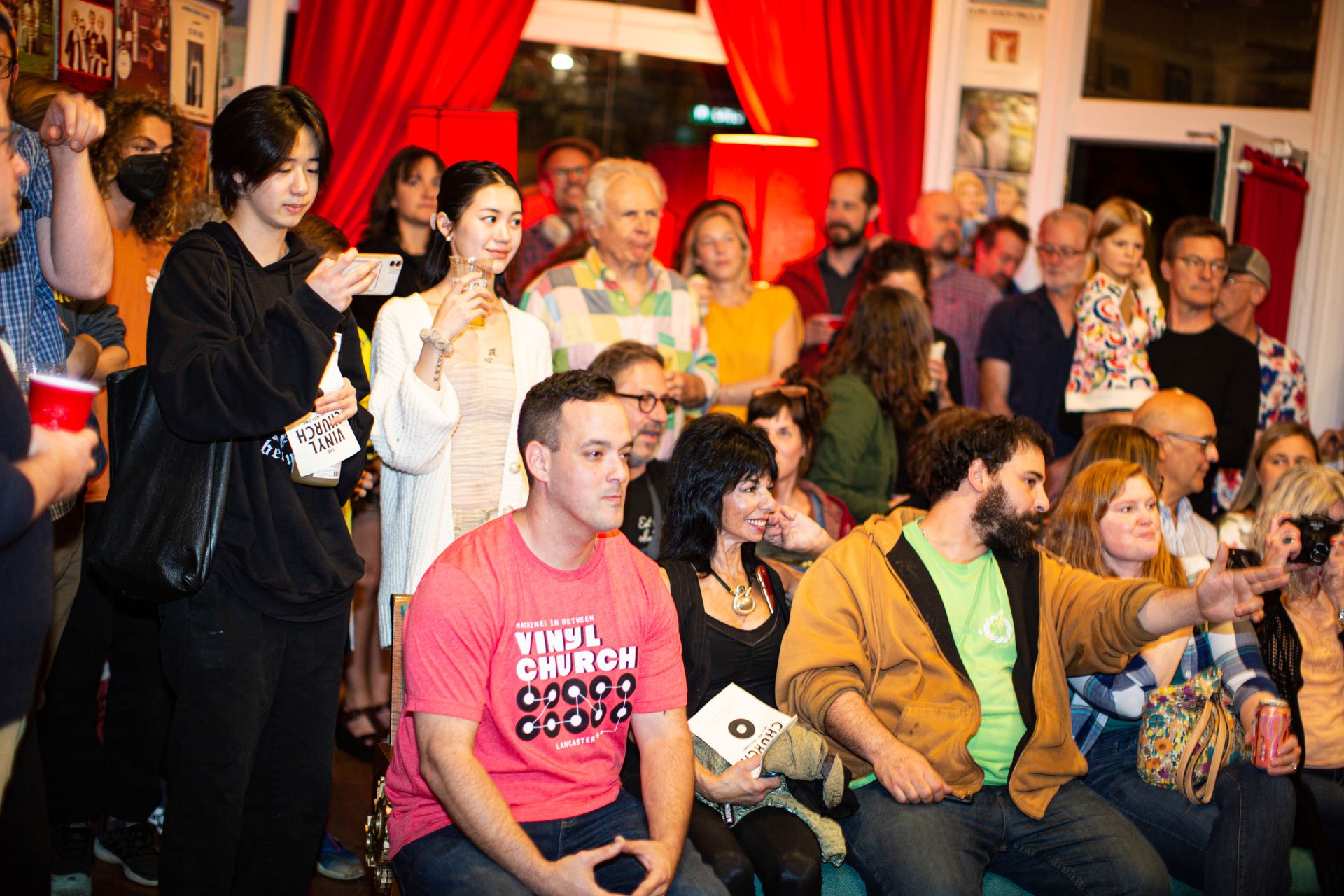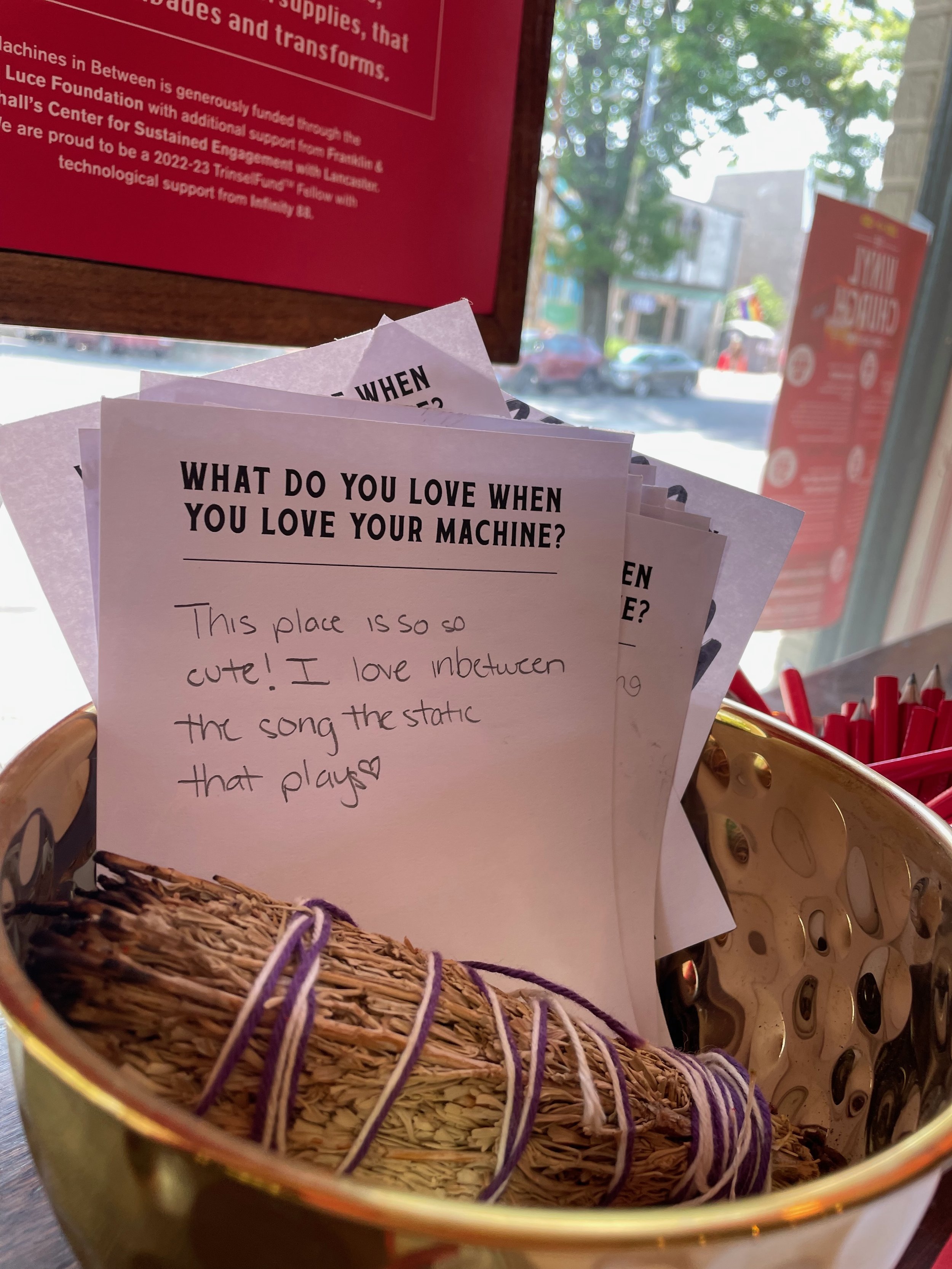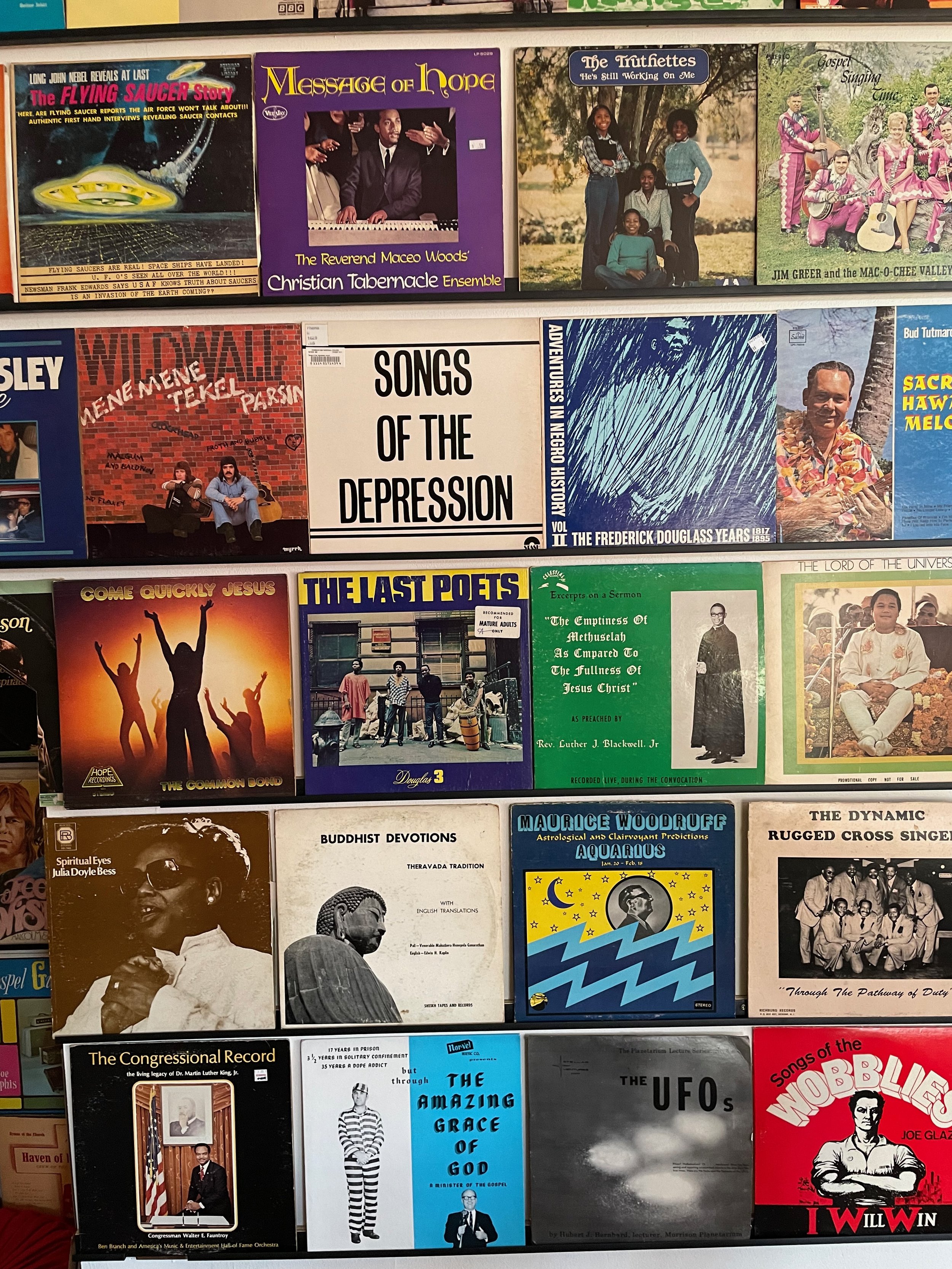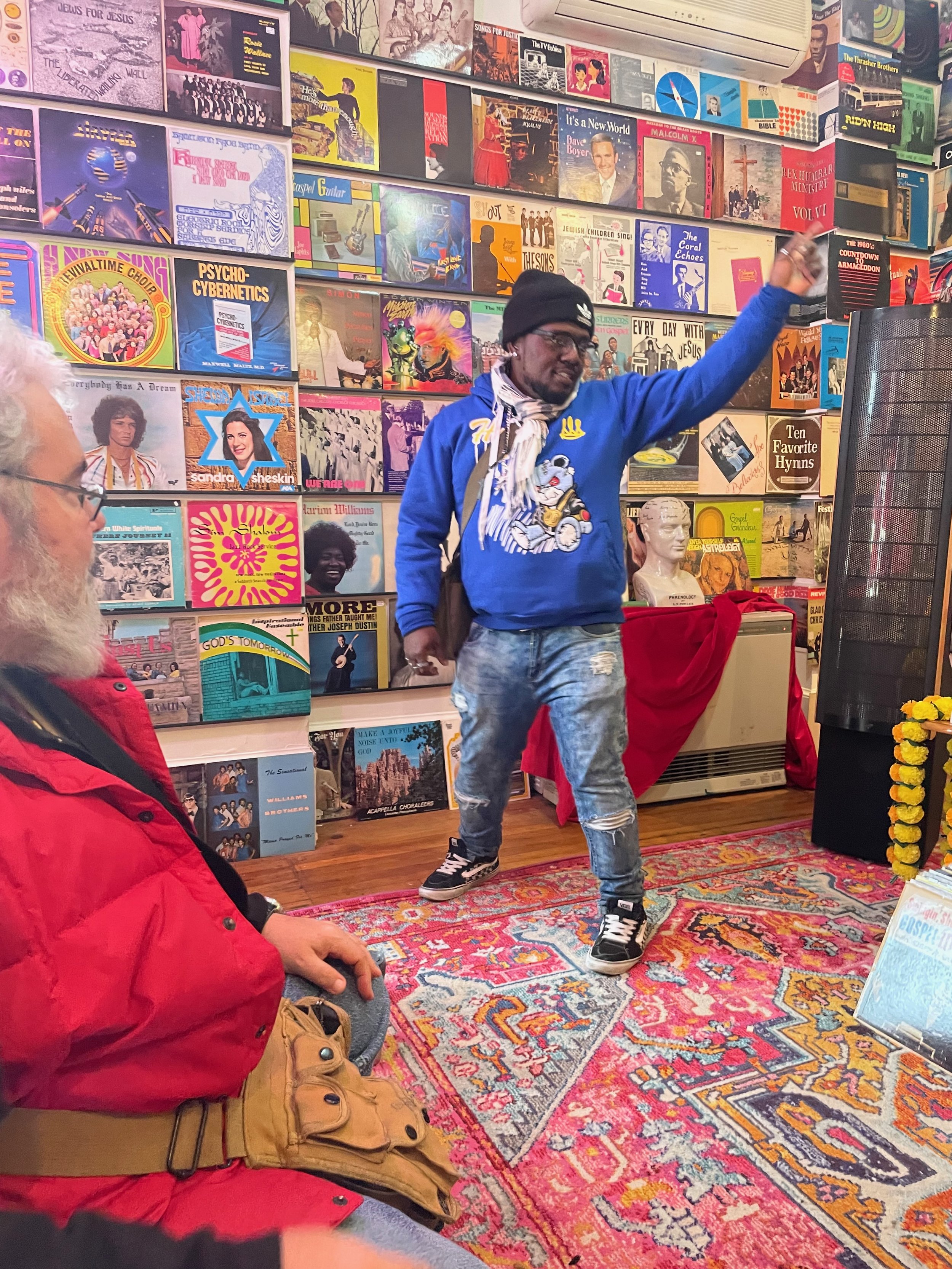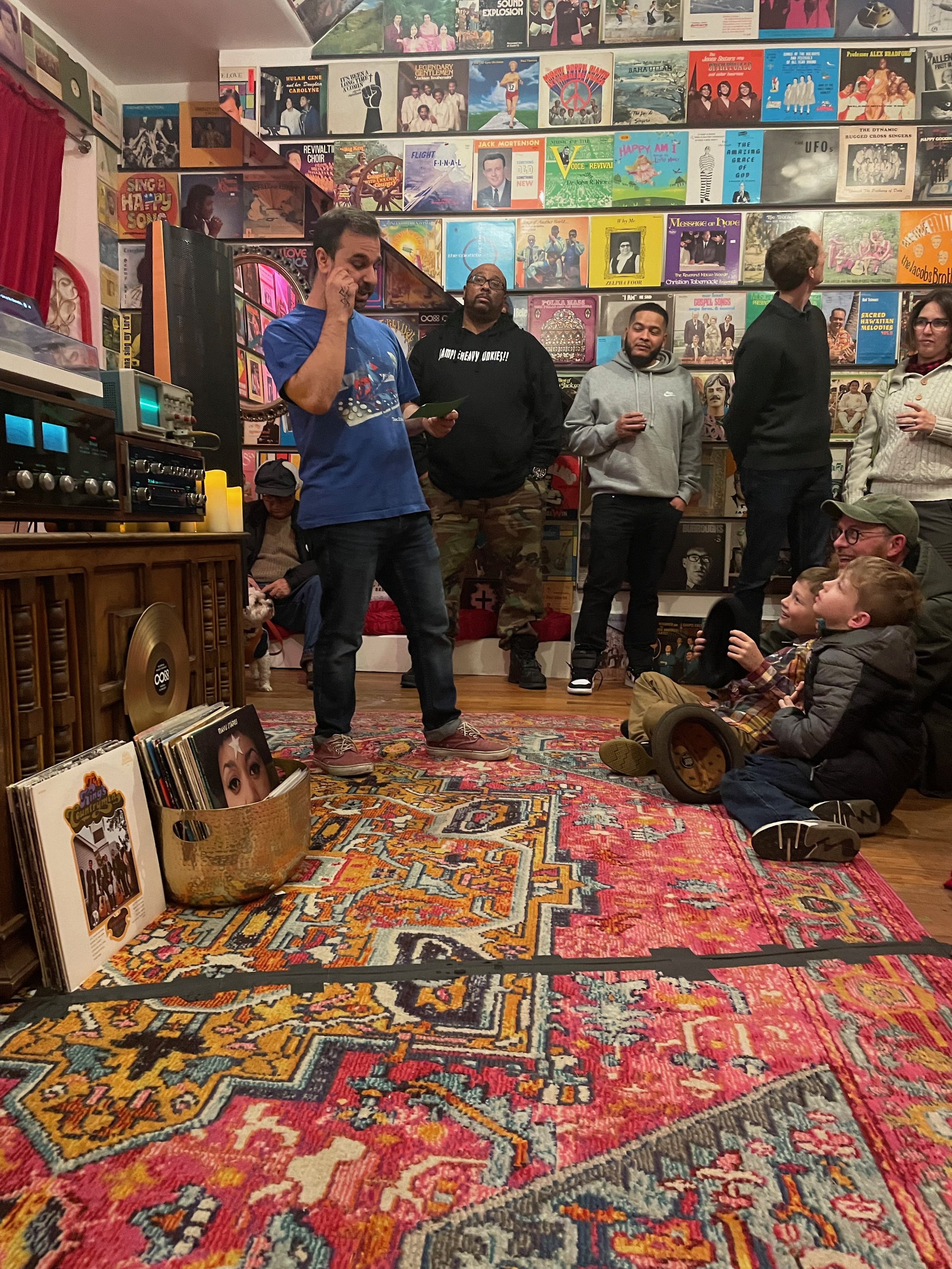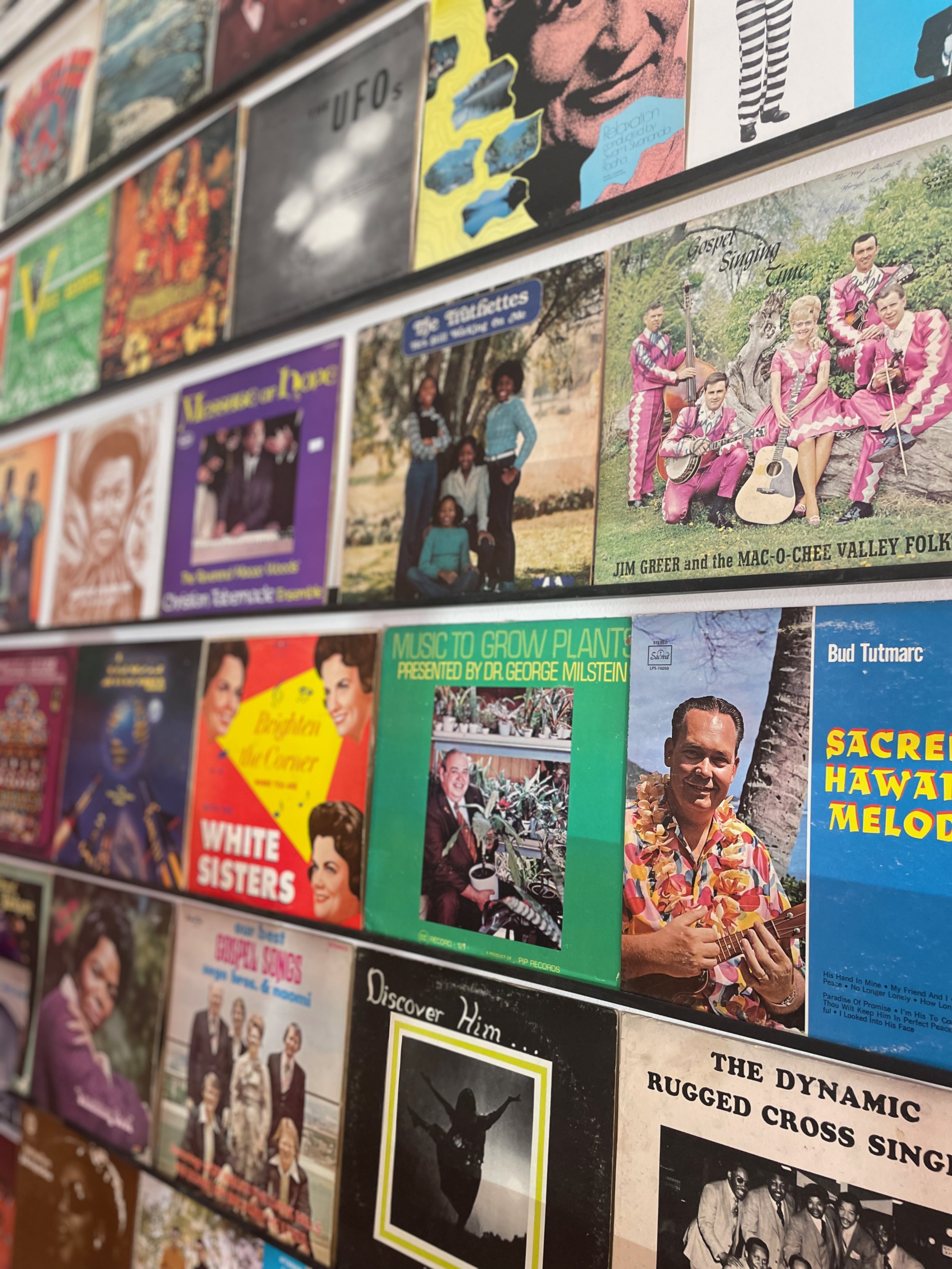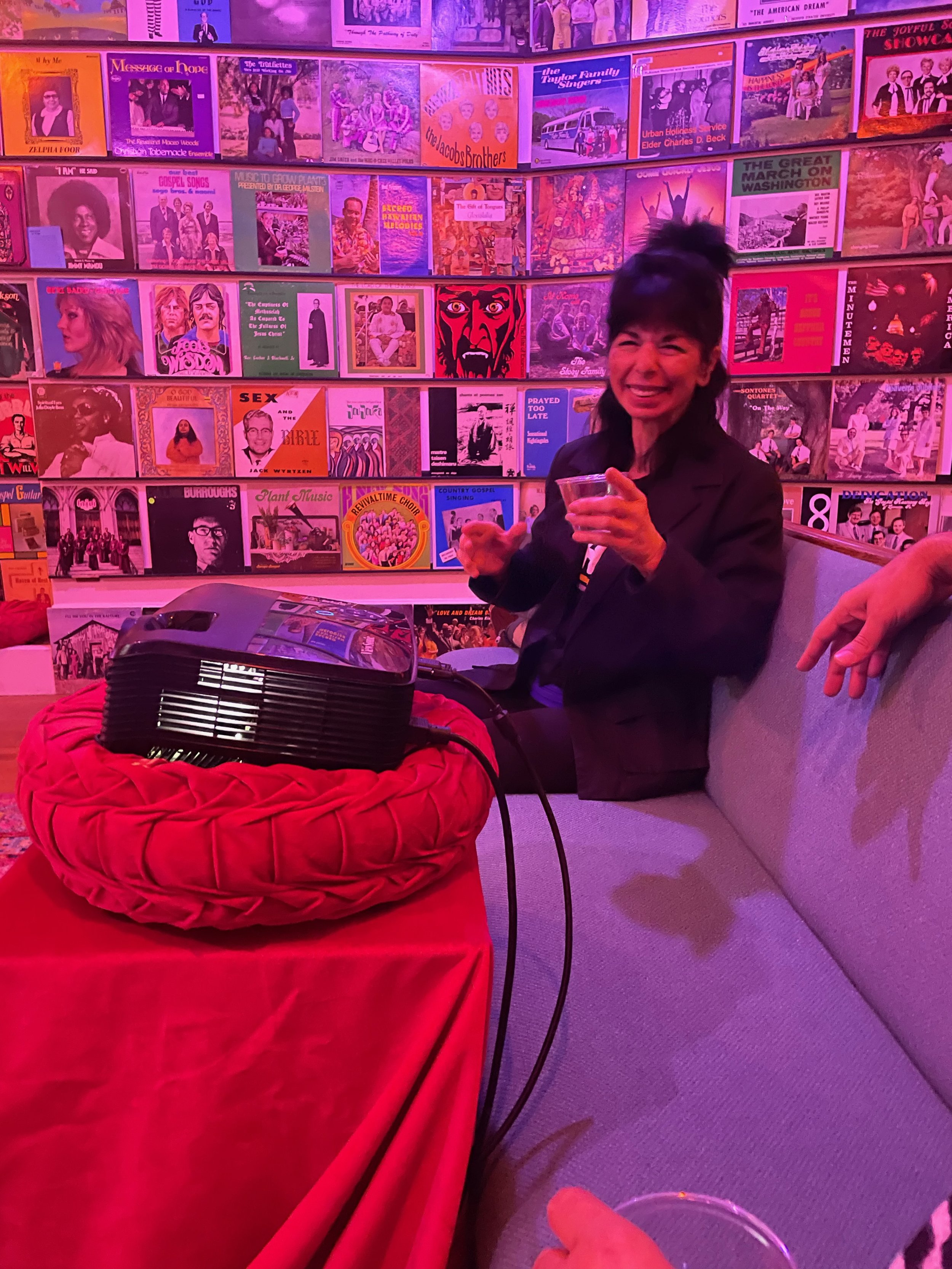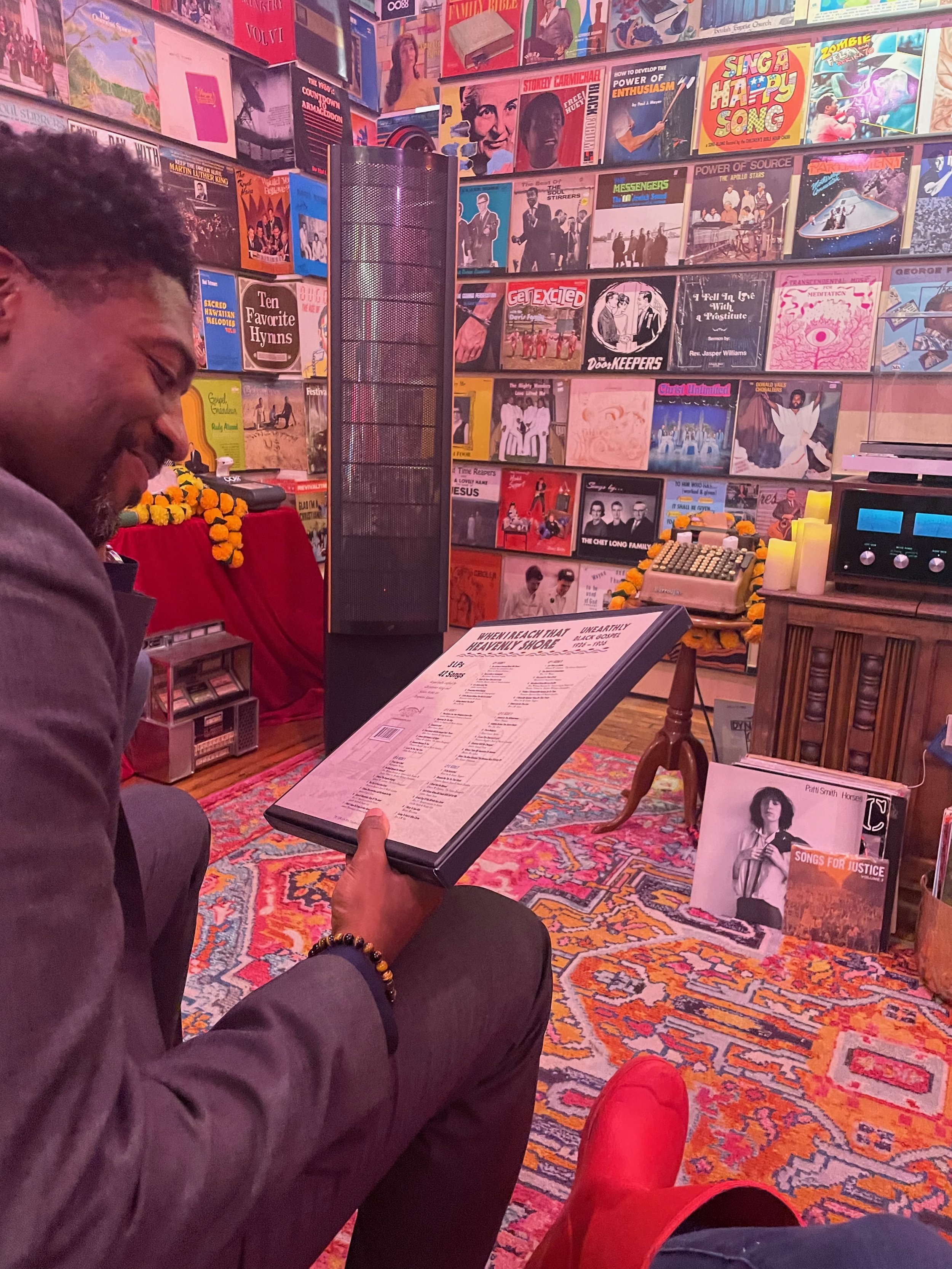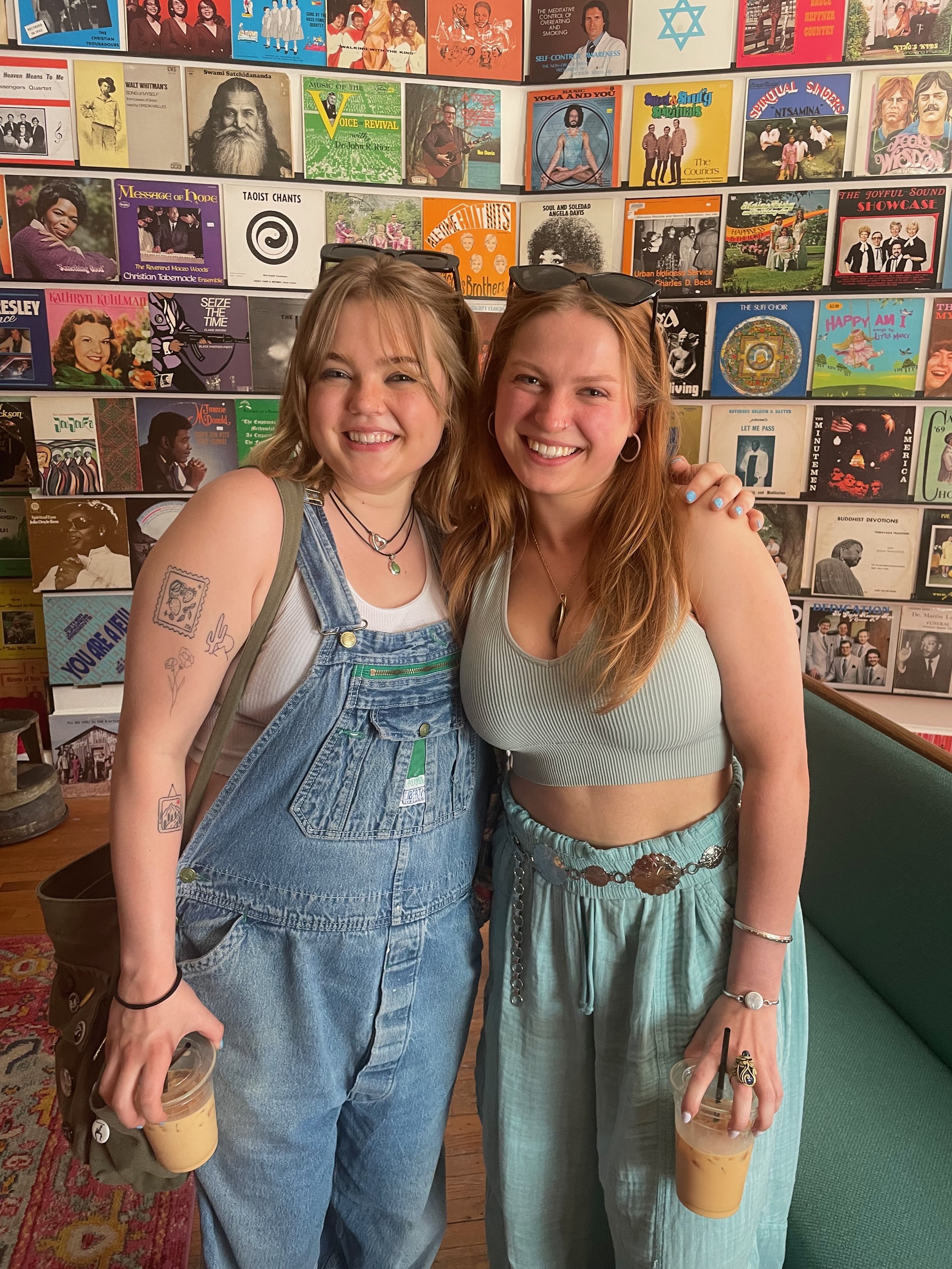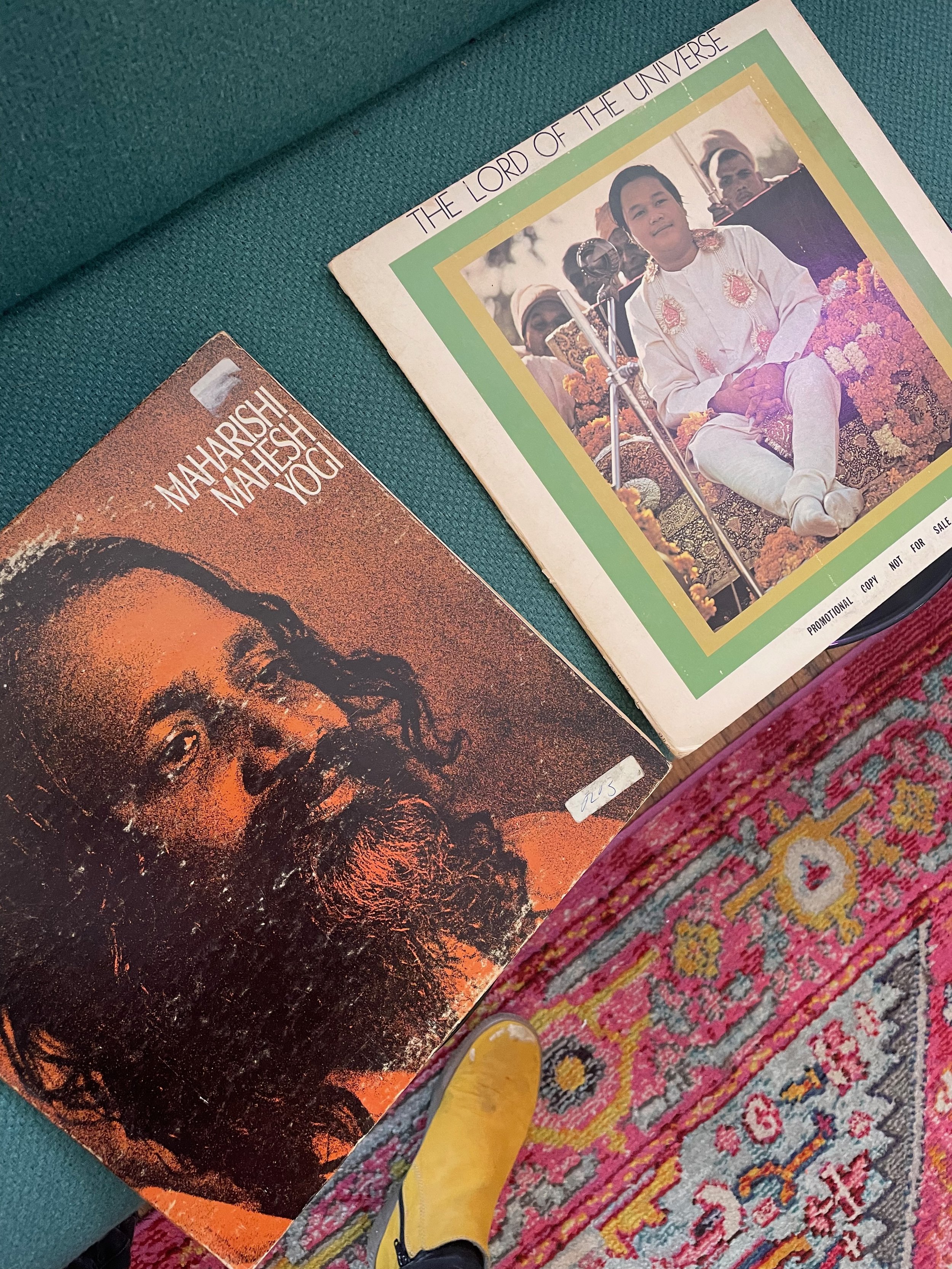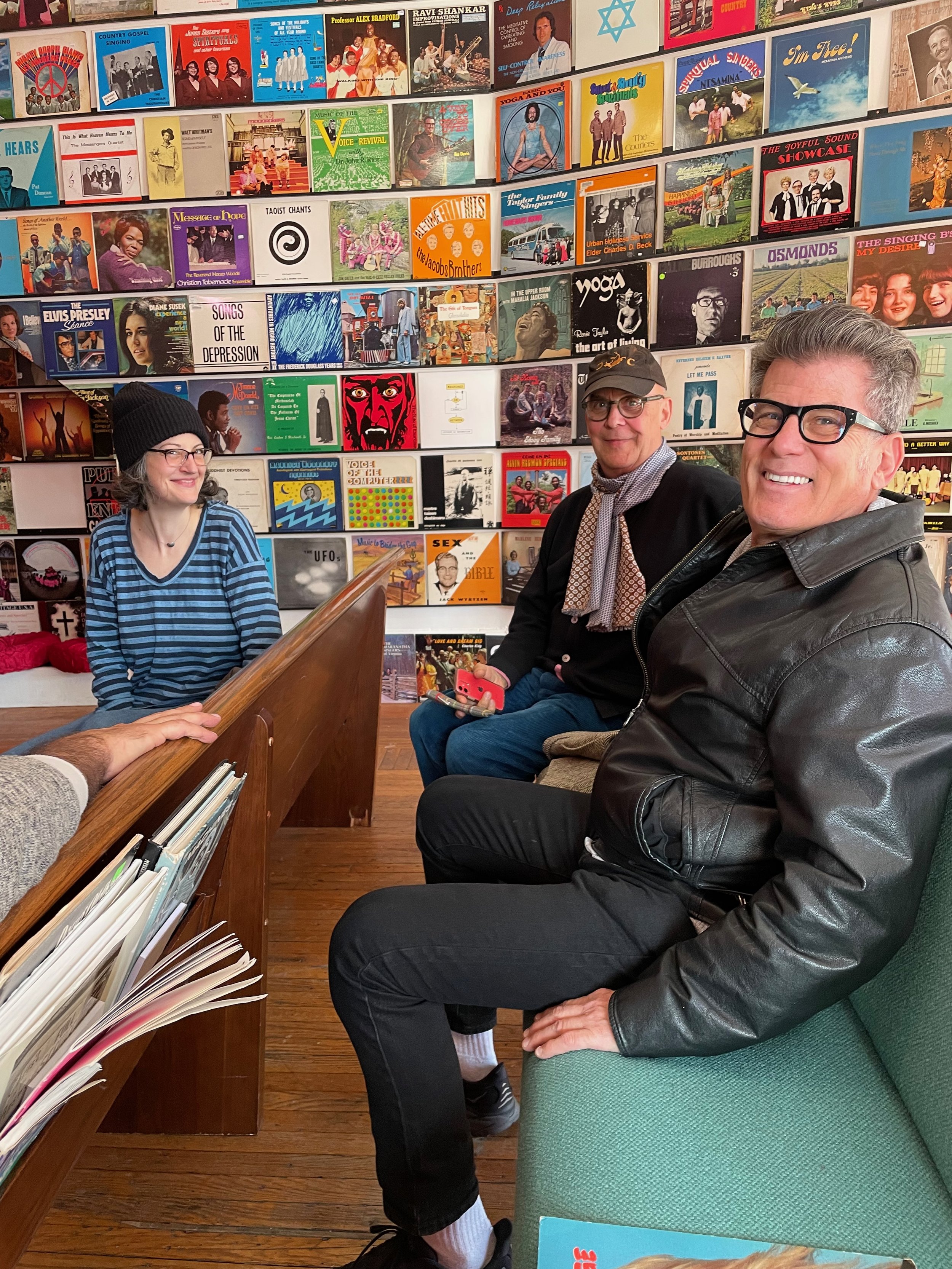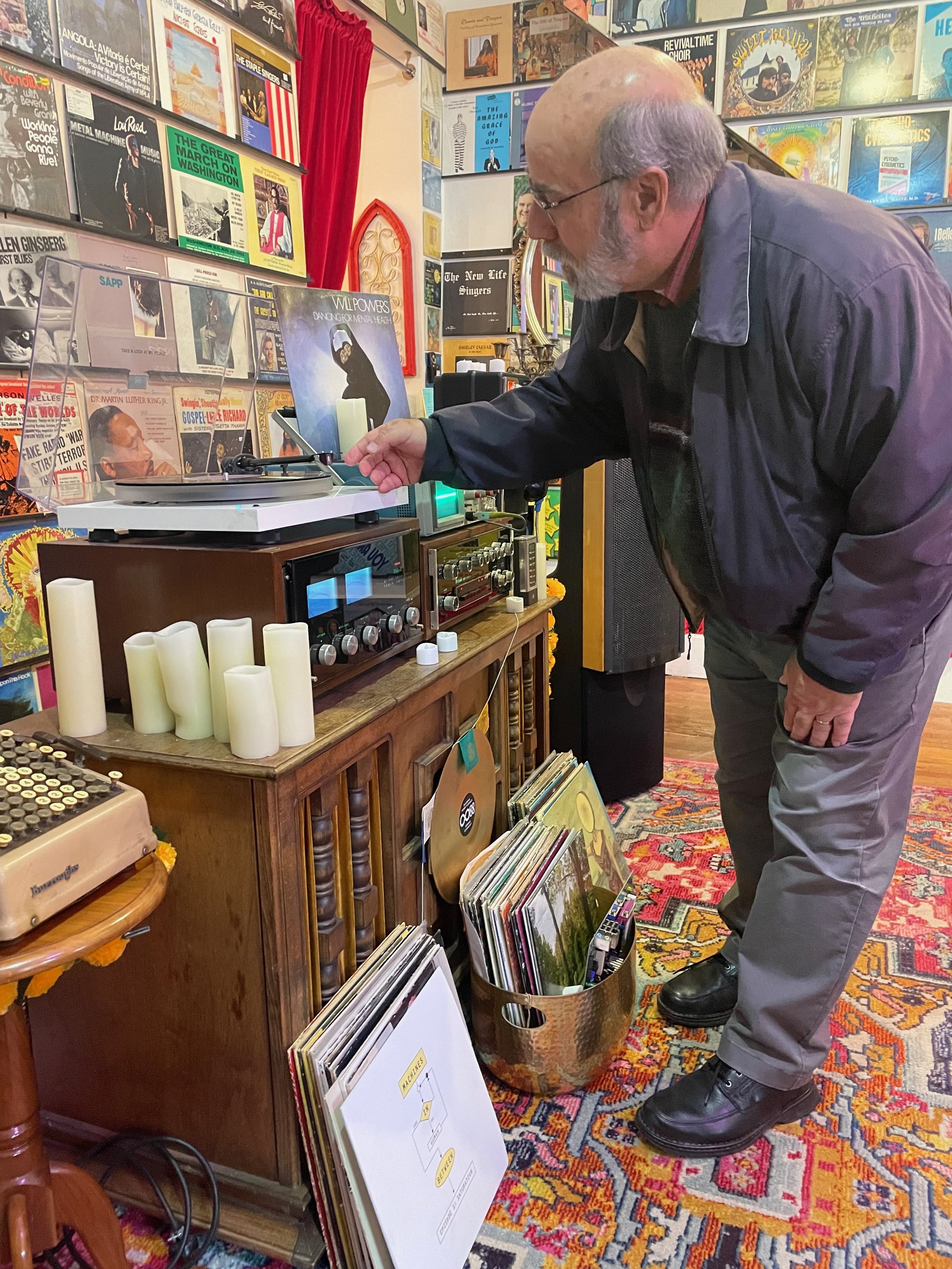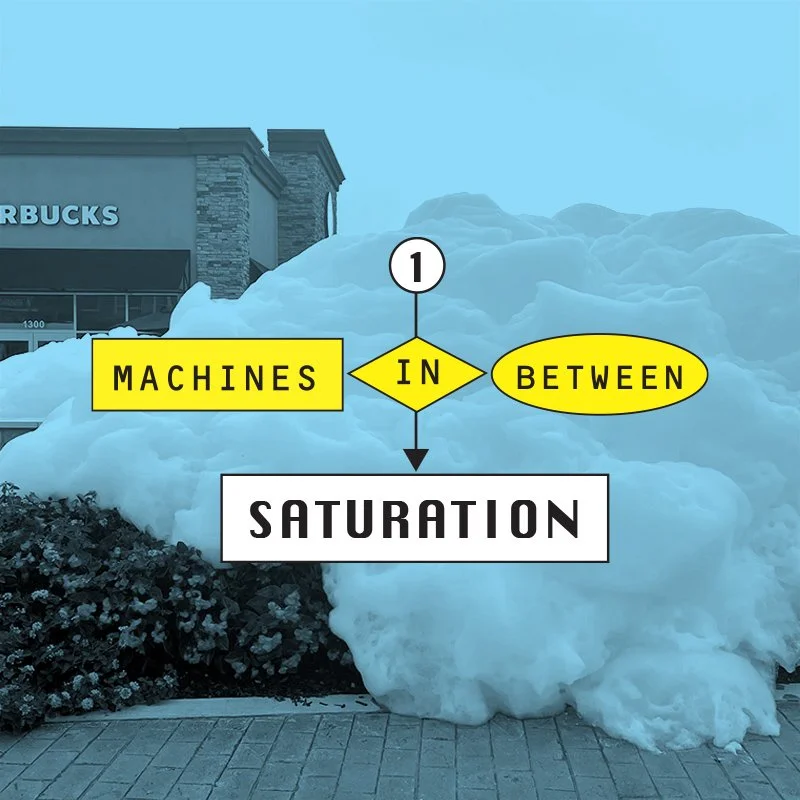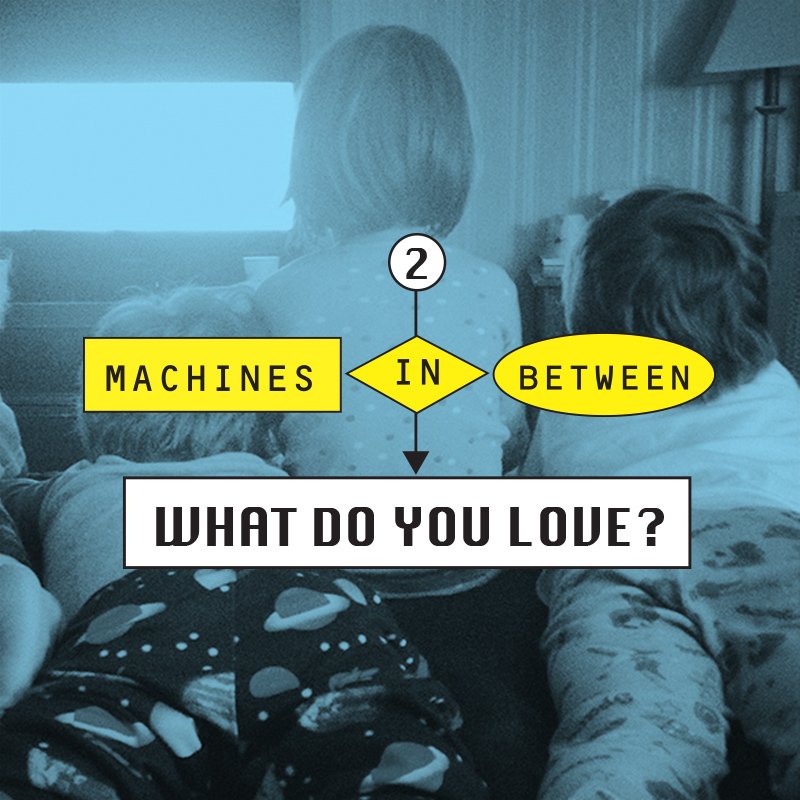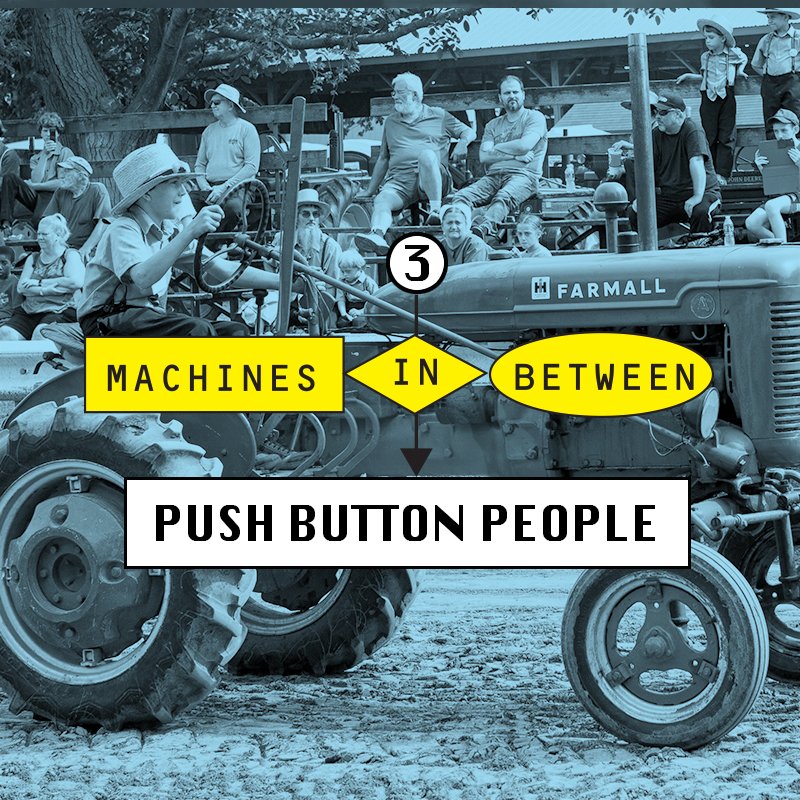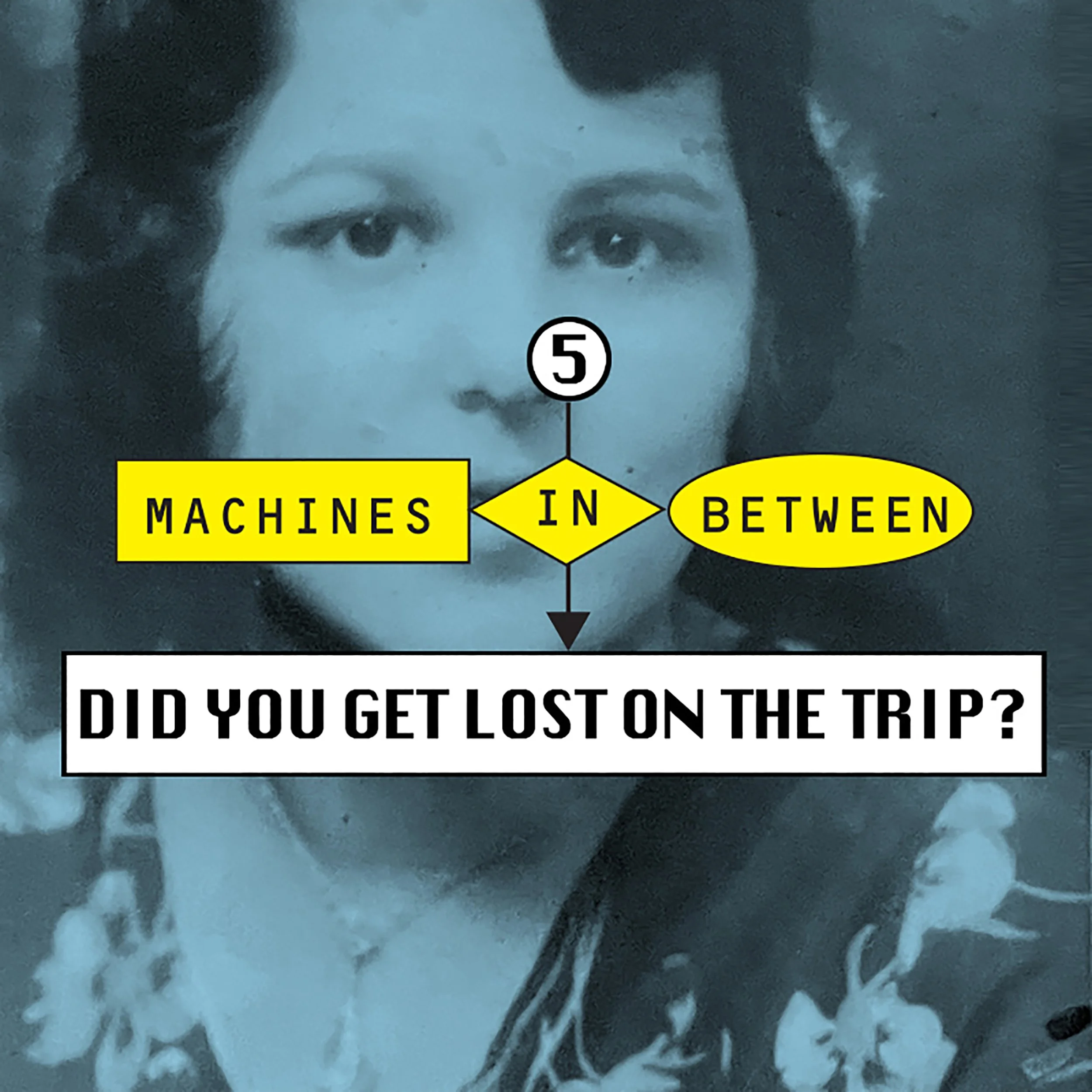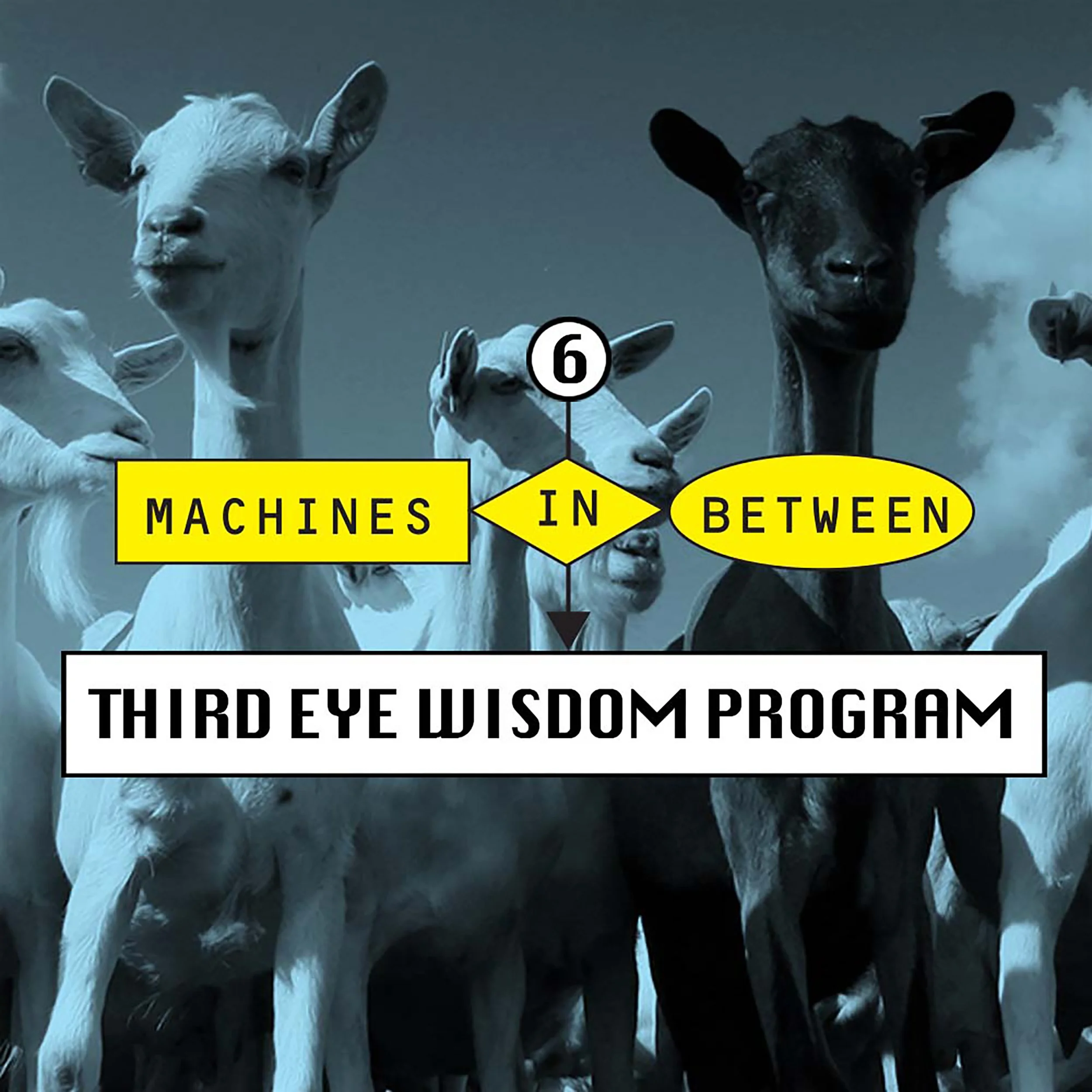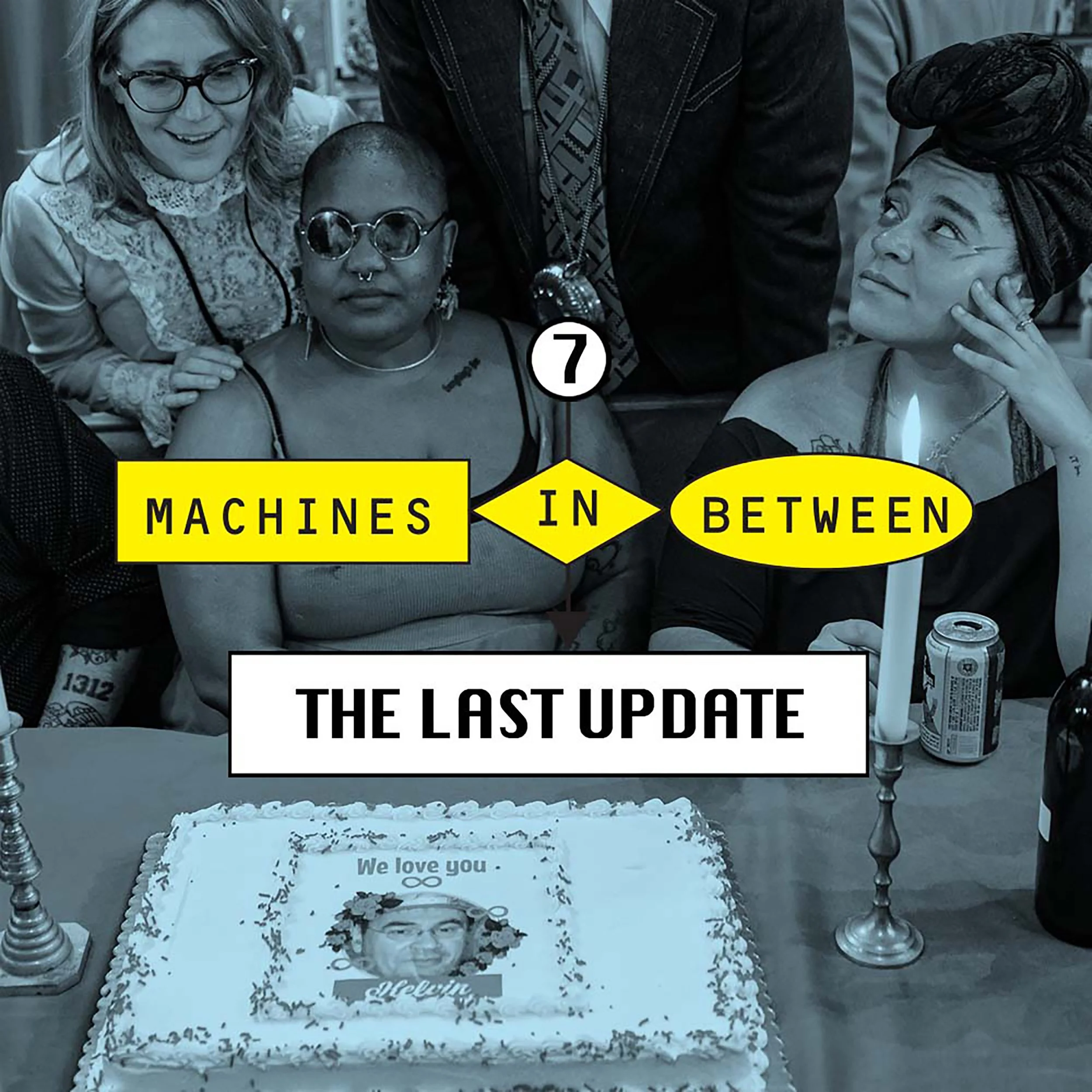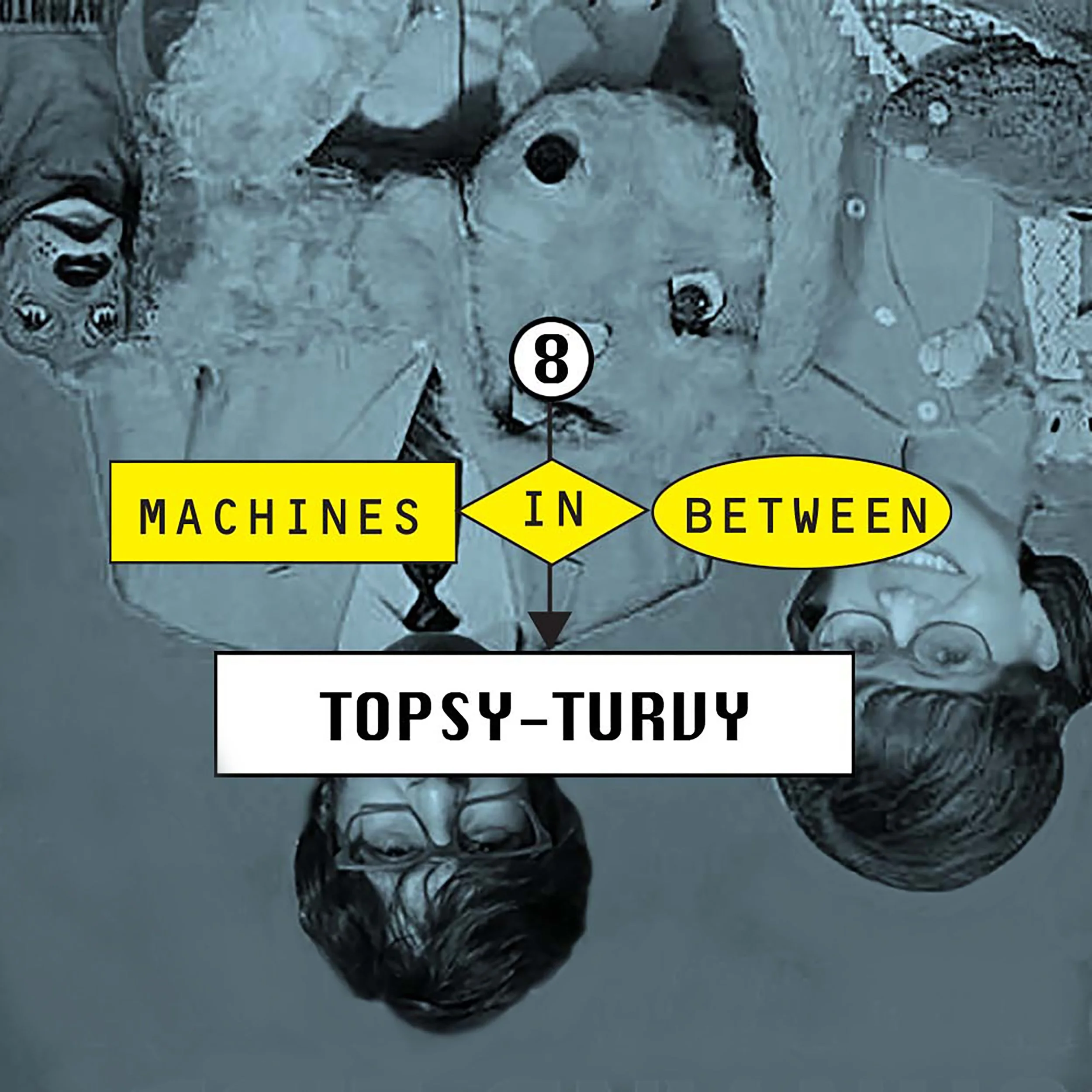Machines in between:
Public Humanities never sounded so good.
Modern Art is proud to present our latest collaborative project: Machines in Between, an audio-visual experiment that reimagines our present state of technological saturation. Comprised of a genre-bending podcast and the experience of The Vinyl Church at Modern Art, Machines in Between is pushing public discourse around our concepts of religion and technology.
Machines in between:
An Audio Series Like No Other
Featuring an eclectic and world-renowned cast of scholars, musicians, filmmakers, and artists, Machines in Between is an episodic wild ride through a fun-house of samples, science-fiction, and searing social critique. Hosts John and Libby Modern guide the listener through a scintillating sonic landscape—an accumulation of stories, surprising cultural analysis, historical reflection, lush soundscapes, and beats sampled from obscure religious records. Along the way John and Libby negotiate their own relationship and their own sense of reality as they confront the creeping influence of the world’s leading tech-wellness group, Infinity 88, and its mysterious CEO Kelvin Trinsel.
The Machines in Between audio series defies conventional categorization to such an extent that streaming platforms like Spotify couldn't properly classify it. Unable to determine whether it qualified as music or a podcast, they removed our content from their platform—without any human explanation or intervention. This ironic situation perfectly illustrates how quitely problematic the technology we’ve increasingly become dependent on to distribute creative ideas is.
But have no fear, you can defy that algorithmic censorship and listen up online at www.machinesinbetween.com! You’ll be rebellious AND delighted!
Machines in Between is generously funded through a grant from the Henry Luce Foundation with additional support from Franklin & Marshall’s Center for Sustained Engagement with Lancaster.
MACHINES IN BETWEEN:
Community Engagement at the Vinyl Church
From November 2022- May 2023, The Vinyl Church invited visitors to reimagine what religion is in this contemporary moment. As the public-facing center of Machines in Between, the Church manifests a collaborative, socially-engaged approach to public humanities—serving as a community sanctuary where all are welcome to gather, browse, listen, and learn.
Consisting of a turntable altar, a hi-fi sound system, and an extensive archive of wall-to-wall records, the Vinyl Church was a free space for the community to gather. Visitors were welcome to sit in the pews, choose a record of their choosing, and listen for as long they liked.
In addition to it’s regular weekly hours for drop-ins, the Vinyl Church hosted dozens of events and gatherings, ranging from experimental lectures by leading scholars of religion, musical performances, film screenings, poetry slams, photo shoots, programming for our community partners, “deep listening hours” for each episode of the audio series, as well as grief counseling sessions and therapeutic gatherings for adults suffering from mental illness. These events have been exhilarating in the range and diversity of the participants. And they have been incredibly effective in connecting with the public and making connections across demographics.
Throughout it’s year-long installation, the Vinyl Church became a space where neighbors, visitors, friends, and strangers could gather, not only to listen and learn about the music and religious traditions, but perhaps more importantly, to listen and learn from each other. We are amazed at how it became a manifestation of community- all different kinds of people coming together for respite, conversation, reflection and (dare we say) enlightenment. We learned how participatory art in this form can break down barriers, allowing us to approach complex and often controversial topics in a manner that creates connection, conversation and hope.
The Vinyl Church showcased and distilled an essential truth of our present age—how our encounters with technology can serve to upend commonly held assumptions about the world, about ourselves, our beliefs and about each other. Indeed, it was the express purpose of the Vinyl Church to stage a perpetual scene in which there was little if any difference between the religious and the secular. The albums in the Vinyl Church were chosen for their insistence upon a world elsewhere; chosen for their intensities, desperate demands, and surplus of feeling; chosen for their longing, gnashing, bending harmonies, and crawling on your knees wailing. These are records that speak of good and evil, of God’s redemption, of standing awestruck, of ghosts and talking spirits and UFOs, of chakras, or working class liberation and racial justice, healing energies, and apocalyptic endings.
“To enter into the Vinyl Church is to find yourself stepping into an underdiscovered room in which you have kept an unmanageable quantity of wonder, reverence, mystery, and joy. Go and be transformed!” — Peter Coviello, Professor of English, University of Illinois, Chicago
As one of our beloved Vinyl Church deacons, Franklin & Marshall student Roxy Calder beautifully summed up:
“I often saw my Sunday visits as confessionals. People from all walks of life sat in the pews as I listened to tales of religious trauma, career panic, growing pains, and dreams for the future. It was a cathartic experience of reflection and self-reflection, on a constant loop. As I spent my sunny Sunday mornings in the pews I learned about myself through learning about others. The Vinyl Church introduced me to this entire undercurrent of diverse and engaged people, who are working to make this community meaningful, in many lovely ways. I cannot begin to express how grateful I am for that.
And, on a much larger scale, this entire process has been a much-needed lesson in collective and creative scholarship. It has shown me an academic world that is far from the stuffy or solitary image I have held in my head. It's a world that replaces competition with collaboration and sets a foundation for constant and productive reflection and change.”
